How To Uncorrupt Government In 3 Simple Steps
(we said simple, not easy)
“You never change things by fighting the existing reality. To change something, build a new model that makes the existing model obsolete.” – Buckminster Fuller
It’s no secret what we at the Society of Problem Solvers view as our biggest solvable problem in the world today. We have written countless articles about it: Our biggest solvable problem is fixing the corruption in the systems that govern and control our lives.
Systems that are free from corruption are something that all of us should want. It doesn’t matter your political affiliation, race, age, sex, religion, or any other label. Corruption-free systems benefit us all. The only reason any person or entity would be against creating corruption-free systems would be if they were part of the corruption. So in addition to fixing the actual problem and exposing the nefarious, this is an opportunity to bring people from different walks of life together to begin to repair the trust that our bad systems have damaged. With all of the division in the world today, humanity would greatly benefit from something that could unify us. Preventing corruption in our systems is a perfect cause to do just that.
In short, the proposed solution is summarized by these three simple steps:
Step 1: Make new high-trust transparent systems that we build and control 100% as citizens, then migrate to them as a place to solve problems together and block out the propaganda and noise around us.
Step 2: Use Human Swarm Intelligence and/or think tanks (idea labs) to problem solve and control the direction of the new high-trust systems in a decentralized, highly aligned, careful, and educated way.
Step 3: Plug our new high-trust systems into our current corrupted systems in order to fix them.
That’s it.
We believe this three step process can be done on any corrupted or poorly performing system of government that still allows for voting and the voice of the people to be heard. In our last article HERE we described how to do a very similar fix for businesses, with even less steps. But in this article we will focus on fixing corruption in governance, specifically.
We say this next part with humility: There is new knowledge here to be discovered. We don’t claim to have all the answers. What we claim to be doing is actively seeking and examining them, and what we have uncovered so far looks very promising as a solution and is holding up to scrutiny—at least thus far. So when you read this, please keep that in mind. If you disagree with some of what we describe, maybe you can add a way to improve the system or revise it. Or bring an alternative solution to the table that we can test or experiment against, together.
The ideas within this article have been pieced together from many different minds and form a mosaic of highly-aligned Human Collective Intelligence, which is ironically the foundational principle of the entire article.
To us, there is only one statement you need to agree with to be part of the solution, and that is this: The systems that govern our lives have been corrupted, and it is vital to all of society to fix this problem.
If you agree with this, that means you get it. Our computer has been hacked. It has a virus. And if that is the case, is it really the best course of action to keep arguing over what programs run better on our corrupted computer? Or, should we be focused on fixing the actual computer itself? It helps to think of the hot button issues in society like programs that run on the computer, and the actual government like the computer itself. If we try to fix the hot button issues before fixing the broken computer, it will be futile. We will continue to divide ourselves for possibly eternity over them. The main problem we should be focused on right now is getting the corruption out of our main operating systems. The other problems are secondary.
How important are systems? Arguably the single biggest determinant for quality of life on this planet. There are millions of cases of people leaving countries with bad systems in search of countries with better ones. Think of all of the things that are determined by the systems we live under. If these systems were corruption resistant, it would improve life for all of us in countless ways. If this is something you agree would be a worthwhile goal, then we have a common ground to unite over — and an important one at that.
There are a couple parts of the proposed solution that seem to catch the most push back. We have “steel-manned” our position enough times now that we realize the main driver of the pushback is nearly always coming from individuals who have not taken the time to understand the problem fully, or understand what the concepts and theories we describe really mean. Specifically, the pushback seems to derive from a general lack of understanding decentralization vs centralization in systems, and systems in general.
To clarify, we appreciate all feedback — and pushback — since in fact diversity of opinion is needed for good think tanks, idea labs, and Swarm Intelligence systems to optimize. But we simply ask that you please try to understand the concepts first. Otherwise the discussion will devolve to parochialism, and not be productive. If you understand the problem and concepts well, then we can be solving this together, as a high-functioning problem solving unit - aka a “swarm.” We provide hyperlinks like this one throughout this article that will equip newcomers with the resources necessary to deeply understand the concepts and theories we use to make our case. We believe everyone can understand these concepts with a little effort. They are simple concepts, and many are testable in everyday life (you can test them yourself). In the past, many people who thought they disagreed with some of these concepts, changed their minds once they understood them better, or tested them personally, including several of the people helping write this article.
In this article we will do our best to lay out the basic ideas, so that everyone can grasp them. But deep dives beyond this article are strongly encouraged so that we can have as many informed people as possible who care about fixing our systems, helping us solve this problem together.
In other words, if you consider yourself a problem solver, we need your help.
Let’s break each of the 3 steps down.
Step 1: Make new high-trust transparent systems (Network States) that we build and control 100% as citizens, then migrate to them as a place to solve problems together and block out the propaganda and noise around us.
In step one, what we are really solving for is trust.
It’s a big problem, and the solution needs careful consideration. Right now no one trusts any of our systems. The lack of trust in systems leads to a lack of trust in each other, which then blossoms into most of the problems we face today. Think about it. What systems do you currently trust? Systems of government, media, medicine, food, law, academia, social media, science, and even voting have all lost the trust of the people for one reason or another. If these systems have all lost trust, where can we turn to in order to solve our problems?
We believe that we are better off creating our own, new, high-trust systems. Ones that we can run parallel to the existing systems as a litmus test, to see precisely just how corrupt they really are. An easy example to imagine might be voting where you cast your vote twice, once on the government system and once on a transparent high-trust system run 100% by the people - and then compare the two systems’ results.
Additionally, it would be immensely helpful to have a place to problem-solve together that quiets the noise around us. So, by creating a space without interference from corrupted top-down entities, bots, media, celebrities, advertisers, centralized tech companies, governments, AI, corporations, labels, propaganda, academia, or the general noise of the world, we could have exactly that. If we build a new platform to aid us in peaceful assembly, it will support us in proper problem-solving as well. Once this new transparent and trustworthy system is built, we can then use it to solve our other trickier problems—such as the hot-button topics—together. After it is built, we can then plug this new system into our existing corrupted ones, much like a plug-in for repairing corrupted or outdated software or computers (more on this in STEP 3).
It may sound simple, but in order to make a system that actually solves for broken trust, we need to examine and define trust much clearer than most people usually do. It is important to note that there are two different kinds of trust: Peer-to-peer trust, and trust in a system.
Peer-to-peer trust is trust between individual nodes in a system - like between you and your spouse, or friends, family, strangers, neighbors, business partners, politicians, or even a business itself.
The second kind of trust is simply trust in a particular system. Trust in a system is different than peer-to-peer trust. In our society currently both of these forms of trust are broken. We don’t trust almost any of our systems, and as a result we find it hard to trust each other, the individual nodes. The good news is, both of these can be repaired. But we must understand that they are repaired in different ways.
Trust in our systems must come first. Our current systems are not doing a good job of fighting the existing corruption. When a system is corrupted it loses trust. So instead of fighting against these corrupted systems, we must build new, high-trust (or no-trust) systems that government and corporations and centralized authority have no control over. Whatever new system we build must be entirely transparent in order for everyone to trust it. Plus, transparency is the kryptonite to corruption.
Transparency is also the one thing that can be used as a cannon of truth that the corrupt systems can never turn to, for fear of exposing those doing the corrupting. Additionally, our system should be open-sourced, and should choose an economic model that has the least opportunity to become corrupted.
What is the best way to do this? We are not sure yet. At the very least the system needs to be run like a swarmed business, like we wrote about HERE. We also discussed the possibility of making it a non-profit that we create together and have the board of directors be all the members - the entire swarm - using the new technology we describe below, or something similar. An additional possibility is to have all transactions and accounting be on Bitcoin’s ledger - so it is transparent and decentralized even further. Another option… maybe it could be a digital co-op type system with lots of little donors/owners/members. Or maybe even a DAO (Decentralized Autonomous Organization) run by a Swarm.
Whatever we decide, it has to be trustworthy and well thought out.
Deciding this right now is not as important as building the high trust platform for everyone to meet on first. Once a platform exists where we can problem solve together, we can then decide as a group how to financially structure the system in order to best maintain trust and keep out corruption.
Trust in systems is based on two criteria:
Transparency
Results
If the people in a system cannot see the whole system, they will eventually stop trusting it — especially when it falters. Also any system that claims to be democratic in any form must operate with transparency (like we wrote about HERE). For if the people cannot see what is really happening then their vote or say in the system is pointless, and the system will eventually become corrupted.
As for results — even if a system is transparent — if it is not getting good results then the people will lose trust in it. It is safe to say that most of our systems right now are not getting good results. Take any metric — from health, to the size of the middle class, to national debt, to personal debt, to education, to drug overdoses, to homelessness, to life expectancy, etc. etc.; the results of our systems seem to be going backwards. To compare this to jiu jitsu, if you were taught a move that never worked in sparring, you would lose trust in it eventually, even if your instructor was transparent about it. Results matter. A lot. And there is no accountability for results in our current systems. No one gets punished, and nothing changes when our systems get bad results. To make it worse, new laws are almost never based on results, or even have metrics in place to keep them in check. Whatever new high-trust systems we decide to build together, they must be results-driven, and we would be wise to set metrics and goals for all policy changes.
We could point out countless more symptoms and examples of corruption in our current systems, but there is no need to. We can all see it. The politicians in our systems are largely owned. There’s dark money in politics, corporations literally writing the laws, the lack of oversight for corruption, bribery, the stock market portfolios of politicians, the collusion from media covering for them, the revolving doors of big business and government, relatives of politicians getting ridiculous paydays for menial jobs that they never attend, and more examples like this are all obvious to us now with a little effort and intellectual courage. Combine all of this with the strange evidence from Jeffery Epstein, FTX, and beyond (like we wrote about HERE) … and who knows just how cozy government and the richest, most powerful circles on earth have become. When you read books like Whitney Webb’s One Nation Under Blackmail (part 1 and 2), and dig into each thread, you don’t exactly come away feeling great about the way our systems are all heading. The systems are corrupted. Trust is broken.
How do we fix it?
The solution we are exploring here is this: we make our own transparent and decentralized systems that make the current corrupted ones obsolete.
Unlike our current ones, whatever new systems we decide to build should be continuously tested for corruption — just like red teams in software development do. As Naval Ravikant likes to say, “The test of a good system is to give it to your enemies and see if they can break it. If they can’t then it is a good system.”
Let’s build a system like that. If we do this, then we can rebuild trust in our systems and half of the problem will be solved. But we still need to solve for the other half: peer-to-peer trust. So how do we repair individual trust between people?
We do what Amazon and eBay did. We decentralize trust, and quantify for it.
Remember trust in a system is based on transparency and results. But trust between people is built on two different things, namely:
Vulnerability
Effort to reciprocate (i.e. protect that vulnerability)
If a person is vulnerable with you, and you put effort into protecting or reciprocating that vulnerability, then trust is built. And vice versa. Sometimes that vulnerability is loaning money. Other times it is babysitting children, pets, or property. Other times it could be emotional, strategic, sexual, or commitment-based vulnerability. Yet even other times it could be accrued off of transactions, working on projects together, business dealings, or trades. All of these things (and more) originate with vulnerability and result in trust gained, or trust lost.
In any system, peer-to-peer trust is built over time between each node — each person — as they interact with each other. Look at it like the sellers and buyers on eBay or Amazon. How do they know how to trust each other? All users rate each other, with stars and written reviews.
The same could be true in any high-trust system or Network State we built.
If you study game theory, you probably see how beneficial it is for achieving results in the real world. The people who put the most effort into being honest and rational with each other would be the best kind of people to play what is called the “iterated prisoner’s dilemma” with in the future. If you are not familiar with that term, the iterated prisoner’s dilemma in game theory is where two players are playing a game of trust, both looking for the best outcomes. To do so they must take vulnerability risks with each other. The best long term outcomes occur when both players are trustworthy and have good moral values, or at least a code they honor.
That’s worth repeating.
The best results from the iterated prisoner’s dilemma in game theory come from groups of people who offer up some vulnerability to build trust in order to collaborate together. This is not hyperbole, or a way to feel good about humanity (even though it does do that as well). This is the actual results of the experiments.
Here is a great animation about the iterated prisoner’s dilemma and the solutions to it:
It turns out that when trustworthy people get together and cooperate, they reach optimal outcomes for everyone in the group, in a real and measurable way. Trust matters for results, especially in decentralized but highly aligned systems of people on a mission together.
Think of it like a Navy SEAL team. They have done so many iterations and difficult acts of trust to get where they are that they don’t have to worry about one of them not doing their job or betraying the team. They are not looking at each other suspiciously. Rather, they have their eyes outward looking out for the whole group. In other words, they have each other’s backs and are highly aligned and competent on how to behave as a group, all within that particular ultra high-trust SEAL team system.
The same can be true for all kinds of business dealings too. For example, listen to one of our favorite thinkers, Silicon Valley icon Naval Ravikant, discuss what makes high-trust systems so effective. He calls it playing “long term games with long term people.” Picture a start-up tech incubator in a garage in Silicon Valley where the people in that system may work for years and barely scrape by financially, but then sell the company for five billion dollars two years later as a result. When you have high-trust, the entire team can build compound interest. Compound interest is where the magic happens. And compound interest can be supercharged by building it on trust to begin with. Naval explains:
We could be supercharging systems everywhere like this, with trust. Or at least in the places where high-trust leads to better outcomes for society (which seems to be almost every system).
Right now the least trustworthy people are running our highest trusted systems. At the very least, we should be scoring politicians and people of power based on trust, like we wrote about HERE.
Sure, not everyone will want to be vulnerable or be part of a society like this, but plenty of people will. In fact, with all of the lack of trust that exists elsewhere, people are craving to live in a place where trust is abundant. Anyone fortunate enough to ever have been part of a high-trust system like this, can attest. Sure, there will be skeptics, but most of them are just ignorant and are not speaking from experience or experiments. Once the world sees and understands how much better the results are from high-trust systems, other people who once shunned the idea will come around to it, because more opportunity — in the free market, friendships, relationships, collaborations, and much more — will exist here than does elsewhere.
Imagine a social media-like digital platform, or, more accurately, a Network State like the pioneer Balaji Srinivasan wrote about HERE. We highly recommend this book as a resource for everyone trying to understand the possibilities here. If we create a high-trust Network State it will solve a big chunk of our problems. If you are not familiar with that term yet, basically think of it like a digital place like what we are describing where we build these kinds of high-trust networks between each other, and make our own rules. The only difference is there will be no founder here. It will be leaderless. Or rather, everyone who is part of it will help lead.
But in order to build a trustworthy place like this, quantifying trust in our system would be essential.
Screeech. Record skip. We know.
This is the part where we get the most pushback, and rightfully so. “Quantifying trust” sounds an awful lot like Social Credit Scores and the nightmare of Central Bank Digital Currencies (CBDCs). And none of us want that. So what is the difference between Social Credit Scores and Peer-to-Peer Trust Rating Systems?
The difference would be how the system was set up - decentralized vs centralized, and transparent vs secretive. For social credit scores, the centralized government rates you in a totalitarian nightmare scenario. But peer-to-peer trust rating is something we all do anyway in everyday life, just not at scale. We already know a lot of people that we trust, and plenty that we don’t. Again we point to the systems like eBay, Etsy, and Amazon, and their peer-to-peer rating systems.
If this part is still troubling you, we suggest attempting to fully comprehend the difference between centralized and decentralized systems. We recommend investigating the “last hand on the bat theory of systems” like we wrote about HERE. Also, the book we highlight in that article, The Starfish and The Spider: The Unstoppable Power of Leaderless Organizations, is brilliant at explaining it, and an easy and quick read.
In short, the difference between peer-to-peer trust scores and social credit scores is the same difference between CBDCs and Bitcoin. They are opposites. In our new proposed system the trust ratings would be decentralized, where users rate each other. Under the horrors of social credit scores, centralized entities like governments rate the people; and as mentioned centralized powers are always corruptible.
Here is a quick graphic to help facilitate understanding the differences:
As for results, even very sharp thinkers like Naval Ravikant and Balaji Srinivasan say that the best solution to the iterated prisoner’s dilemma is “tit-for-tat.” Basically you do to the other person whatever they did to you the previous iteration, with some forgiveness mixed in for errors or mistakes. We used to agree with this, but not anymore. We now think the best solution to the iterated prisoner’s dilemma is knowing how trustworthy the other people are in the game before you decide to work together on a project, solve a problem, go into business, collaborate, or do any iteration with them at all.
Another thing to note, any decentralized trust system needs to be somewhat forgiving. Plenty of sellers on eBay or Amazon have gotten only one star for a bad review, but still have good overall scores. The star ratings aren’t only what builds trust. Everyone makes mistakes sometimes. What builds trust more is the second part of our equation: effort to reciprocate. If you saw that an eBay seller apologized and fixed the problem of a one star review, then you probably wouldn’t be too afraid to buy from them in the future. In fact, it might increase the odds.
Solving for this kind of trust is not that difficult. There are many ways we could build a peer-to-peer trust system. Another idea we played with was the idea of “trust tokens” with a crypto wallet on blockchain like we wrote about HERE, where you can only give away tokens for acts of trust —both online and in person. But more recently we like the idea of “vouching” for each other better. Each member “vouches” for other members and leaves a digital review (again just like on Amazon/eBay).
A vouch might read “James is literally my brother. I would lay my life on the line for him.” Another might read “Only met her once, but we solved this problem together and she was cordial.” Yet another might read “been working together with them for years and here are some links/photos/videos of some of the projects we completed, and swarms we have done.”
Vouches could be added and removed, and the comments could be updated as the relationships evolved. This would create a traceable peer-to-peer web of trust that bots and AI couldn’t navigate well because the system would hybridize both the digital and real world. Meeting in person would bridge the gap and build additional trust. To quantify this, we could give peer-to-peer “badges” to each other for these additional acts of trust. Met you in person? Here, have a badge that says that, along with a written review. Trained jiu jitsu with you before and you let go of a choke when I tapped out? That’s an act of trust. Here is a badge for that. We went into business together? Another badge. Attended school together? Badge. We are part of a local swarm or problem solving group that is part of the larger high-trust Network State we are building here, and we attended an in-person local meet up? We all get a badge. We completed the Swarm Academy 101 course on how to optimize problem solving in groups? Badges for each section of completion.
The possibilities here run deep.
Sure, AI and bots could form fake webs of trust if they somehow infiltrated our Network State. But because of its transparent and high-trust nature it would be obvious when these webs didn’t connect to anyone else we knew or trusted in person. And, we could have additional tests of trust for any person we thought was suspiciously not real.
Decentralized systems are very hard to corrupt, especially when they are transparent. They become even harder to corrupt when the people involved all have skin in the game. Centralized systems on the other hand will always become corrupted. It is just a question of how long it will take.
Will there be bad apples in our system? Yes. In fact we should assume with any system that there will always be people who will try to corrupt it. But unlike our current systems, the bad apples here would not only be held accountable for corrupting the actual system, they would also lose more than they could have gained by being trustworthy and working with us. People who betray individual trust will be punished for it by the system. For example, if someone decided to try to rip off others inside this ecosystem — which inevitably someone will try to do — everyone simply would remove the vouches that we gave to that person and leave a negative review instead. If a person had too many negative reviews, and didn’t seek to remedy them with obvious effort, no one would want to collaborate or problem solve with them anymore. Just like what happens to sellers with bad ratings on eBay, people would lock themselves out of long term opportunity and compound interest in our Network State.
By quantifying for trust, we can more quickly form trustworthy problem solving groups — like SEAL Teams who fix real world problems — with other like-minded people.
One final thing on trust. Elon Musk and Dr. Jordan Peterson got into it once on Twitter/X over being anonymous or not online (we wrote about it HERE). Jordan’s position seemed to be that we need a high-trust society and everyone should use their real name online, and wanted X to be the platform to do that. Elon countered that people sometimes need to be anonymous. When Jordan asked why, Elon said that people could get fired or persecuted for having certain opinions online. Elon had a point, since Dr. Peterson was going through a literal lawsuit for exactly that, basically. His license to be a psychiatrist was in jeopardy in Canada for his opinions.
The topic of anonymity online has been discussed in many think tanks. Should anonymous people be welcomed in a high-trust society or Network State? That’s a tough question. We can see ways that even anonymous people could earn trust online. But we think it will be much harder for someone who is anonymous to earn trust from a decentralized group, than someone who is courageous and vulnerable with their real name. Why? Because vulnerability is inherently part of the process of peer-to-peer trust. You are less likely to be seen as an AI or bot if you use your real name and people can vouch for you and give you badges for things you did in real life.
That said, the reason that Elon gives for people to remain anonymous online, we think is easily solved in another way. He believes that having the wrong public opinion could harm people. In order to solve this we need systems where the ideas stand alone and are not attached to the individual. Systems like Human Swarm Intelligence systems where ideas can be isolated by their own merit. This way no one would know whose ideas they were. In fact, knowing who made the ideas in a swarm can cause some of the perils sometimes found in groups. Things like tyranny of the masses, witch hunts, or as Tim Urban calls them in his amazing book, “What’s Our Problem:” Golems. The main enemies while working in groups are echo chambers, cascading, groupthink and corruption (which we are solving for now). Fortunately these are all solvable problems.
Tim draws brilliant illustrations to help us gain the concepts. He feels that “high-rung” thinking is the best way to avoid turning into Golems. We don’t disagree. But to us collaborating groups of people are best optimized and kept near the top “rungs” of the ladder by using high-trust systems, which in turn lead to high-rung thinking. As with most problems, we believe it is more about the systems than it is about the individual people in the system.
Philosophically - and we could write an entire massive article just on this topic - we believe that people in general would rather do good and be productive than succumb to corruption. A phenomenon known as Moloch gives way to dehumanizing and oppressive forces once people lose trust in their systems and feel there is no other option to survive or get ahead. But with better systems, and given the option, most people would rather have honest opportunities than have to succumb to the Moloch of a corrupted society (lots of studies to back this idea up too; people are generally kind and good hearted when given the choice). Quite a few studies on this are cited in this BOOK).
There is a lot to still think about and discuss here. But the main idea with all of this is to repair trust and optimize problem solving in groups. To do that, in the next section we will elaborate on why we see “Human Swarm Intelligence” systems as essential for creating what Tim Urban refers to as Genies and SUPERGENIES.
Here is some of Tim’s explanatory art:
(excerpt image from Tim Urban’s book: What’s Our Problem?)
That’s right, Genies and Swarms. They are actually quite similar, once you understand them both. How do we use high-trust systems to prevent Golems and instead nourish SuperGenies, while working in groups of problem solvers?
Let’s unpack Human Swarm Intelligence systems in STEP 2:
Step 2: Use Human Swarm Intelligence and/or think tanks (idea labs) to problem solve and control the direction of the new high-trust systems in a decentralized, highly aligned, careful, and educated way.
This entire next section is about problem solving in groups from the bottom up, instead of the top-down.
Let’s assume that our new transparent Network State, or system, from STEP 1 is already built, and we can now work together in groups to solve problems in a space that we trust that quiets the outside noise and propaganda.
Right now most of our solutions in society are coming from top-down, centralized, non-transparent entities — which means they are likely corrupted. Most of the people at the top of these centralized monoliths do not have “skin in the game” (as described in Nassim Taleb’s book HERE), and in fact get bailed out when they make mistakes (see the Big Banks, Big Government, or Big Corporations). This is a recipe for disaster for everyone else in the system. The people on top get to take risks without any consequences, while the people on the bottom suffer those consequences.
Solutions that come from the bottom up - from the people who actually have skin in the game - are far better thought through, more creative, more fair, and more empathetic in nature. They are almost always better solutions as well. But most importantly, these solutions are not corruptible the same way centralized top-down solutions are. With decentralized problem solving we would never see solutions like billionaires flying their private jets all over the world to tell the rest of us how to fix the environment by not traveling or flying places ourselves, or telling us not to eat meat while the menu at their conference has plenty of meat on it, or telling us not to leave our homes during a pandemic while they dine at fancy restaurants. Conversely, bottom-up solutions would start with conjectures, or questions, the way real problem solving is supposed to work. What is the problem we are trying to solve? What is our mission? Or “This is what we know so far.” And then go from there.
As a free society, we should not accept being told what the solutions are without being invited to the table to discuss. When top-down entities are informing us of the solutions before debating, experimenting against, testing, disclosing all the information they have, being transparent, or fully understanding the problem themselves, that should always be a red flag that their solutions have agendas that do not usually have our best interests in mind. When the problem-solving sessions do not include the people affected by the problem, and we receive immediate answers from centralized entities such as "We know the solution, and our way is the only way to fix this," then we can safely assume it is agenda-driven, or in other words, corrupted.
To combat this, we need a trustworthy, decentralized system that also gets amazing results. Coincidentally, that is exactly what Human Swarm Intelligence systems are. They are advanced versions of think tanks or “idea labs” that facilitate and optimize decision making for groups. And the results they consistently get are both amazing and testable.
Let’s shift gears by simply stating what we know for sure: Humans solve problems better in groups, especially if the systems they operate under are designed to nourish that goal, and the group is educated on how to optimally behave. This is not debatable in our eyes anymore, and we can and will prove it many times over. Of course, you shouldn’t trust us; you should investigate. And when you do, you will see that most of the truly amazing things in this world were done with groups of people collaborating together in the same aligned direction. When you have the right system—such as a decentralized, transparent, and trustworthy one—and then you add something as powerful for groups as Human Swarm Intelligence is to the mix, those groups of people consistently transform into what Tim Urban would certainly define as “Genies.”
So what is human swarm intelligence?
Human Swarm Intelligence has many names. The Wisdom of crowds, Collective Intelligence, Swarm Theory, or just swarming to name a few. Although it may sound esoteric, it is actually quite tangible, practical, and fairly easy to test for yourself if you are skeptical. The simplest definition for swarming is this: take a group of people and get them to problem solve together and come up with one solution, or answer as a group. So let’s say there are 10,000 people in a group. You could ask all 10,000 people a question and get one unified answer. You could also get multiple competing theories or answers if that was the goal.
It has been repeatedly shown that large groups of people are collectively smarter than individual experts. And while this may sound contradictory to all of the common stigmas that exist around groups, MIT’s Center for Collective Intelligence has even come up with a fancy name for these collective intelligence collaborations: SUPERMINDS. But since academia has so many problems with corruption itself (sorry MIT, but what were you and Harvard doing with Jeffery Epstein?), we prefer to use Tim’s fun term of “SuperGenies.”
We have the opportunity right now to use technology to enhance this phenomenon of Collective Intelligence, and we believe it is the best hope humanity has for solving our biggest problems right now, and beyond. When done correctly, swarming systems channel human imagination and cause solutions to flow in a decentralized manner from the bottom up. Combine this with the transparent and trustworthy system we already built in STEP 1, and it makes for a very difficult system to corrupt, which is exactly what we need in order to fix the mess we are in.
The first person to discover there was wisdom in crowds was Francis Galton in 1907. Like many scientific breakthroughs, he actually went out with the intention of proving the opposite; he wanted to prove that crowds were ignorant or dumb. So he brought an ox to a local fair and had hundreds of fairgoers try to guess the weight of the animal. No individual guessed correctly. But when Francis Galton averaged all of the guesses together, it was within one pound of the ox. This original test opened the door to collective intelligence and has since been recreated many times with jelly beans in jars, sports betting, the stock market, the temperature of rooms, and much more. The wisdom of crowds is real, testable, and one of the most underused tools humans have at our disposal. But we have only recently begun adding technology to the equation.
Previously, harnessing the wisdom of crowds was cumbersome, and largely unexplored. Using polls or voting were the only methods available. But now, thanks to technology’s ability to enhance and scale the process — some of the things being done with Human Swarm Intelligence are downright amazing.
For example, groups of doctors increased their diagnosis accuracy by 30% when acting as a swarm – surpassing both individual doctors and traditional AI. Imagine if those were curable illnesses but if left untreated were terminal. With a swarm, 30% more lives would have been saved. That’s remarkable. Or, how about the story of 40 horse racing enthusiasts who swarmed the superfecta — the first 4 horses in a row — of the Kentucky Derby. None of the members of that swarm predicted the superfecta correctly on their own, but acting as a swarm — using newer technology from Unanimous AI — they nailed it. A Newsweek reporter covering that story turned a $20 bet into $11,400. That’s how unlikely the prediction was.
If you are new to Human Swarm Intelligence, here is the Ted Talk where pioneer in the field — Dr. Rosenberg — describes the phenomenon:
Of course, swarms are not right 100% of the time. But they consistently beat out individuals, experts, and more. For example researchers at MIT used swarming with financial traders and found they could amplify the accuracy of market forecasts by over 25%. In terms of stock trading, that is incredible. Or, a simple example that everyone can grasp is how on the TV show Who Wants To Be A Millionaire polling the audience was right 91% of the time while phoning an expert was only right 65%. That is not a sound science experiment, but it helps paint the picture to those new to the concept.
And swarms can do a lot more than just predict outcomes like bets or the stock market well. They can run systems too. Since swarms are groups of people that can act as one person, they can be used to run all kinds of traditional centralized systems in a decentralized manner. We can show you businesses that have used swarming to take their bottom line from failing to massive successes. Or if you run a business or even a department yourself, you don’t have to take our word for it. You can harness the wisdom of crowds from your coworkers or customers right now, like we wrote about HERE. And you don’t need fancy technology to do it (although it helps); you can start with pen and paper polling and voting —old school — and still get very good results if the company or department is reasonably sized and willing to be honest and transparent to make it a high-trust system. Of course technology will amplify this and scale it for larger systems, and that is what we are trying to find ways to build now (hopefully with your help).
We are also analyzing the best ways for swarms to do things like direct smart contracts for DAOs, run high trust Network States, solve problems, predict outcomes, resolve conflicts between groups of people (like this), create knowledge, manage and repair corrupt systems, manage unions, direct non-profits, or — for the sake of this article — run government offices. All from the bottom up.
Simply put, a swarm is a brain of brains. Take any group working on the same problem together, use a trustworthy method to come up with one aggregated answer from the group, and you have a swarm. Bees, ants, fish, and birds use this all of the time in nature in order to find new hives, avoid predators, or establish new food sources. In the animal world communication is limited, but humans have an almost infinite number of ways we can communicate - especially when we integrate technology into it.
If we build high-trust systems and ecosystems and Network States like this together, an entirely different world is imaginable.
Let’s talk about the elephant in the room, now.
We want to get into some visuals here in a moment of how a swarm could work on a massive scale, but before we do let’s address some of the problems and perils that can exist with groups and how to avoid them, especially when we are talking about swarms running systems.
These are all solvable problems:
Echo Chambers/Groupthink. This is the big one, but not seemingly that difficult to solve. The danger for this to happen starts to arise when there is lack of diversity of opinion, or when the desire for consensus or fitting in with a crowd overrides critical thinking. Echo chambers are the root of many group problems and can lead to groupthink, witch hunts, or even tyranny of the masses. We avoid echo chambers by simply making sure we have diversity of opinions in our swarms, and are educated on high-rung thinking.
This is not “diversity” in the typical modern corporate sense of the word, but rather diversity of background, education, skill sets, individuality, culture, and beyond. Solutions to problems often come from seeing and understanding the problems from many different angles. The best way we have found to remedy this is through simple education. If the people who work in a group or swarm take the time to actually learn how to work in a group, then the chances for problems like this to arise greatly reduce. In fact, simple education of individuals might be the single biggest factor for creating Tim Urban’s Genies instead of Golems within all groups. It is also why we are promoting Swarm Academy as a place to learn about Collective Intelligence (more on this in a bit).
Also, we should build fail-safes within our new systems should any of these problems arise despite our prevention methods. One idea was each member of a decentralized swarm could have an emergency “red button” of sorts to hit anytime they believe the group is falling into any peril like with groupthink or tyranny of the masses. The threshold should be low, like maybe 5-10%. And if the number of people who hit that red button crosses that threshold it stops the swarm and calls for a deep review. So far working with groups of trained problem solvers we have had no need for fail-safes. But having them would certainly bring peace-of-mind.
What we know is that the main thing to avoid is echo chambers with groups. Here is Tim Urban’s view of what happens in an echo chamber —on the right — vs an “idea lab” (a swarm is a type of advanced idea lab) on the left, drawn by him, and also some of his diagrams to understand high vs low-rung thinking. We cannot recommend his book enough for being better at problem solving in groups. His renditions:Cascading. This happens when members of a group can see other people’s answers before they populate their own answer. For example if a famous person was in a swarm, other people might see their answer and just copy it. That could cause a cascading effect. This problem is solved by keeping ideas separate from the people who generate them. In other words, in swarms we choose answers based on the merit of an idea all by itself. There is no appeal to authority or cascading in a well designed swarm. Just ideas that stand alone. This also solves Elon’s problem about anonymity online.
Not understanding the problem. This is self explanatory and is also a huge problem for individuals who try to solve problems too, not just groups.
Corruption. This can and is happening currently in a myriad of ways. Our society today understands this problem all too well. New high-trust transparent systems are needed to solve for it.
Independence. Here we scrutinize the individual responsibility each member of a swarm should adhere to in order to achieve the best outcomes for the group. Members of a crowd or swarm must be independent enough within the group to think and act for themselves. Resisting social conformity must be an individual responsibility that should be part of the education taught to all members who want to work in groups. All issues should be self-tackled independently and not tied to dogma, authority, institutions, peer pressure, or labels.
Reversing course. Crowds are notoriously bad at reversing course. Just look at all the bad laws and policies still on the books. In our new high-trust systems part of the education process at Swarm Academy will highlight that we need to be results-driven, and use metrics and measurements to set policies. If we are not seeing the results we want then we must have efficient ways of reversing course. The good news is that swarms - just like prey swarms in nature that are being hunted - are very good at changing direction and reversing course, especially if the system is designed to do so. Swarms are much better than the current top-down government systems are at reversing course.
Coordination. This is a problem with nearly all decentralized groups. They are hard to get aligned and coordinated. Again, you will notice that nearly all of the solutions to these problems are systemically fixable. Instead of counting on people - who are easily corruptible - we use systems that are purposely designed to be harder to corrupt. If done intelligently, our new high-trust swarming systems will solve the problem of coordination - starting by having each swarm having a mission statement.
In his book The Wisdom of Crowds, James Surowiecki lists what he believes are the five essential qualities of a “wise” crowd. In other words, how do you make one of Tim Urban’s Genies instead of a Golem? James lists them as 1) Diversity of Opinion, 2) Independence 3) Decentralization, 4) Coordination, 5) Alignment.
In order to achieve each one, we propose the following:
Diversity of Opinion - This will be solved through Education and outreach. As mentioned there is a new free website being built called SwarmAcademy.ai with learning videos on this subject. In order to join live swarms on Swarm Academy you will need to pass their free 101 course and fully understand what it means, and why it is important to have both diversity of opinion and diversity of backgrounds in problem solving swarms. Also why you should stand strong in your opinions, courageously. But also admit when your logic is not showing results.
Independence. This will also be solved through education on platforms like Swarm Academy. There will be videos on this topic as well. Members of a crowd or swarm should learn why they must be independent enough within the group to think and act for themselves, and live by a code of honor to do so.
Decentralization - This will be solved through our high-trust transparent systems. Education will also help people understand the logic behind it. There will be resources on this topic on Swarm Academy as well, and it is important to note that centralized entities can work for decentralized swarms, but the other way around is corruptible. This is called “The Last Hand on The Bat” theory of systems.
Coordination - This will also be solved through high-trust transparent Network States run as swarms. Building these systems is our biggest obstacle currently. It is both expansive and expensive. Once completed, the coordination problem turns into a SuperGenie.
Common Goals (aka alignment) — We almost think that James Surowiecki could have merged this with coordination. This will be solved by the systems as well - each swarm having a mission statement, and people voluntarily join the missions or swarms that they want to. Want to clean up a park in your neighborhood? Start or join a swarm with that mission. Want to buy a business with 1000 people each throwing in $10,000 and run it as a swarm? Start a mission to do so. Want to answer a simple question from a swarm of 10,000 people? Set a mission or common goal for a new swarm.
Swarming is a skill that is developed, and better systems develop skills faster than poor ones (think of good education systems vs bad ones, or good jiu jitsu academies vs bad ones). With good education, skin in the game, high-rung thinking, a transparent Network State, decentralization, diversity of opinion, fail-safes, and most importantly high-trust systems designed to help us, all of this is very achievable. Just like people can harness nuclear power, flight, fire, electricity, chemical reactions, x-ray radiation, or automobile power — all of these come with dangers, and all can be navigated. We can harness the power and wisdom of crowds, and avoid the dangers.
A SWARM IN ACTION
Seeing how a swarm works really helps in understanding this whole idea.
Let’s examine the basics of how swarming within an ecosystem works by forming an example. To start, someone(s) in the state of Nevada creates a new swarm with the mission statement of: To make the systems in Nevada corruption resistant and more accountable to the people.
Let’s assume the entire state of 3 million people joined the swarm and were part of our new high-trust Network State. Of course some of these are child-aged people and wouldn’t participate in a process like this, but for this example we will use all 3 million to show how the scaling works.
Next, a question would be chosen to ask those 3 million people as the first question to accomplish the mission. Let’s say it was something like:
What amendment should we write to our State’s Constitution to help us prevent corruption in our systems?
This is how swarming could work (we say “could” instead of “would” because there are many different ways to swarm, and new ones still being explored). Participants would break up into smaller cells, or groups of 8-20 people or so. We are going with the number 12 because it fits nicely into the design, but the perfect number is something we still need to test for - same thing with time limits, methods and more. Should we answer the swarm in three minutes? Thirty minutes? A week? Should the answers be written? A video presentation? A PowerPoint presentation? Many methods seem to work well. But we won’t know which ones work best for what kinds of questions until better systems are built and we test them more thoroughly.
Either way, let’s pretend we are looking for written answers and you have 5 minutes to complete your answer. The system would then take all 3 million people and divide them randomly into these smaller cells of 12 people each. Everyone’s names would be hidden during the process to avoid the problems we listed in the previous section (cascading, groupthink, etc). Each person would then populate their own creative answers in the agreed upon time limit and format set by the swarm or system parameters. The answers would populate in a circle and we wouldn’t know who answered what, we would just see 12 random answers. Like this:
If any of the answers were too similar or the same, members of this cell would then drag the answers together merging them into one. Then the system would randomly choose one of the wordings to represent any that were combined together. It is important to note here that answers that are different in logic should be left alone. So if this swarm was writing an amendment to Nevada’s State Constitution with the goal of fixing corruption, and we saw these three answers in our cell of 12 people:
Get the money out of politics
Remove money from politics
Take the money out of politics except all campaign contributions under $20 from personal non-business entities only.
We could see that #1 and #2 would be dragged together as they are basically the same answer; so we merge them into one. Then one of those two will be randomly selected by the system to represent them both. The merged answer would not hold any more weight or value than the other answers, it just wouldn’t be repeated twice and thus diluted in the process. But since the third answer is similar but different enough, we let it stand alone.
We illustrate this here with colors for the answers:
If this swarm answered like this, and the colors represented their answers, they would then merge the similar ones so they weren’t double or triple represented in the next phase:
So even though twelve people began the process, the number of answers were pared down to only nine after we combined the ones that the consensus of the cell thought were too similar to each other - the orange and the bright green answers. After the answers were pared down, the remaining nine answers would go in a circle and the twelve members of the cell could then use Dr. Rosenberg’s digital method, or a similar method (we have tested several that seem to work well) in order to choose which answer is going on to the next round.
We like Dr. Rosenberg’s method a lot. He uses a digital magnet and algorithm to form a human swarm, and then the members push and pull on the clear hockey puck in the middle using their digital magnets until one answer is settled on. The full process in a cell of twelve people would look like this, after a question is asked:
In this case, the light blue answer would be the one chosen by the cell, and the eleven other answers would be eliminated and the light blue one would go onto the next round. Using this method we can populate a creative, well thought-out answer from an entire population of 3 million people in only 7 iterations of swarming. It would look like this:
Once we arrived at the final twelve answers, the entire three million people would use their magnets (or whatever other method we chose) and we would come to a final decision as a swarm. From three million people, to one answer in seven iterations.
A few final things on swarming:
Even though coming up with one unified answer from a swarm is possible, for some problems it might be wiser to generate the top five answers. Or top two. Then, experiment several answers against each other to see which one gets the best results. Remember every decision by a swarm should be results-driven so it knows when to make changes or reverse course. Whenever possible, metrics should be assigned to the mission statement or goal of the swarm.
How a question is worded to a swarm matters. For problems that require imagination, the more creative the swarm can be, the better the results usually are. While Human Swarm Intelligence is one thing, we think what is even more exciting is what we call Human Swarm Imagination. We have found that sometimes broad or open questions are the best like “What would you do if you were in charge of this system/business/Network State/etc?” Or “What do you see as our biggest weakness and how would you solve it?” From what we have witnessed with businesses that swarm, these are the types of questions that have turned into the most fruitful solutions.
Rather than having one person decide what question to ask the swarm, you can have the swarm decide what questions to ask itself. This is a way to optimize self-organization in a decentralized group. The swarm can ask itself stock questions like “What question should we ask ourselves today to help us achieve our mission?” Or “What problems should the swarm work on today?” Or “Who in our Swarm Society needs our help the most right now, and how could we help them?”
Confidence ratings can be added to swarms, so answers can have confidence scores attached to them by the decentralized members for more in-depth evaluations.
You can run the same question through a swarm many times. Each time the swarm learns, and each time the answer has the opportunity to become refined, or evolved, or even changed.
Individuals in swarms should be properly educated before participating. Just like driving a car or flying a plane. In a decentralized group we are all driving the direction of it, and that is a big responsibility, so we need education to help be the systemic way we make that happen (see Swarm Academy, below).
Setting our own culture is wise. Instead of letting top down entities define our culture we should have our own code of conduct. Keep in mind that the iterated prisoner’s dilemma suggests that the more trustworthy our society is, the better outcomes it will get. Culture matters for results.
We have debated having the “losers” of the first round of a live swarm form another fresh swarm, to see what happens with them, to make sure that some good ideas weren’t running into bad luck in the first round, and new knowledge or a clever answer wasn’t being accidentally overlooked. But we cannot test this hypothesis without first having the ecosystems built. Running questions through a swarm more than once is another possible remedy.
In the final diagram for this section we would like to show how we could swarm almost twice the size of Earth in just nine iterations if we had twelve people in each cell. From 14 billion down to one answer like this:
STEP 3 — PLUG OUR NEW HIGH-TRUST SYSTEMS INTO OUR CURRENT CORRUPTED SYSTEMS IN ORDER TO FIX THEM
This is the easy part.
In order for a swarm to be plugged into a government — or any system — the person in charge of the system simply needs to make their position transparent and then decentralize it like we wrote about HERE, and turn it over to the constituents or members of the system.
For government, that could mean the existing politician. Or, it could mean a new candidate - say someone highly trusted from the existing swarm that gets nominated by the swarm to run for office based mostly on their level of trustworthiness.
That’s it.
We have had several people who said they would volunteer to run for office for a swarm and if they won, they would decentralize their position, make their systems 100% transparent, and let the swarm control them. They even offered to wear cameras to ensure transparency, and one person even suggested turning their position into a reality-like TV show, broadcast to the world.
The weak link here is the politician. That is where the corruption happens in our current systems, and that is the part we need to fix and make high-trust (or trustless) with better systems. One potential candidate that we spoke to previously described how they would turn their government position into a swarm like this:
“First, to be clear, I really wouldn’t want to do this. But some people brought my name up recently and asked if I would be willing to do it if they nominated me. So I thought about it, and after discussing it with my family, yes, I would. But the level of transparency I would be willing to show to the people would really be a burden on my home life and my family. Heck, I would wear cameras 24/7 if that’s what it took to earn the trust of the people once again. They would know exactly what their representative was doing at all times for my entire time in office. After considering all this and how radical transparency in my position would be very challenging, I would do it anyway. I would look at it like a service, just like when I served (in the Marines). The systems need our help, so it would, in its own way, have that purpose to me—or duty or whatever. And that makes the decision easier for me.
As for getting elected… It could be any office, doesn’t matter… Democrat or Republican. Whatever was easiest. Just get me in. I would run under one simple campaign: to fix the corruption in our systems by making my position transparent while working directly with the people (via swarming) to fix the actual systems. We would then set aside all hot-button topics until we first fixed the corruption problem in our government—or at least the office I was elected to, to start. Pick any office. It also doesn’t matter—school board, mayor, Congress, President. Once I was in office, I’d show what real representation looks like. I’d turn around and decentralize my position to the swarm and make my entire office transparent. The entire swarm would see everything I did—unless, of course, it was classified, and even then, I would be fighting to declassify as much as possible to maintain trust and transparency in the system. Anything that stayed classified would, at the very least, have a citizen-appointed independent committee to review it, which included random judges currently sitting on benches, military vets looking for purpose after retirement, and more. Also, there would be no private meetings with me. I would wear cameras and mics everywhere I went, broadcasting live on the internet. The people should see the whole process, where the problems exist, and help come up with possible solutions on how to fix the flaws in our systems. I would post all my meetings online, take feedback from the people on all major decisions, and vote on and write new bills directly with the constituents instead of with the corporations like how the bills are written now. Any question I was asked by media I’d only answer from us all, as “we”—as in “We The People.” That’s who I would be answering for. My personal opinions wouldn’t matter. So I would turn around and ask the constituents what our position was on whatever question I was asked, and that would be our answer.
And then, most importantly, we would go find the corruption together. The people would tell me what rock to turn over or where to shine my spotlight, and I would. And together is how we would fix each problem we encountered. In fact, my position in office would become pointless. I would basically be a robot for the swarm—at least until we got rid of the corruption and improved our systems. I would do whatever they said to, including using tax dollars to help them build better technology and infrastructure to make our systems better and even more trustworthy and less corruptible. Also, we would build new task forces and departments together to punish corruption. We could start a war on corruption of sorts. The people corrupting our systems wouldn’t like this, and they would for sure try to come for me. But if I got taken out by bad media, or being canceled, or smeared, or worse… I wouldn’t be afraid. Someone else would just pick up the flag and take my place. Plus, these types of systems could spread so easily they would be hard to stop. And once the people saw how well it worked, they would want the same for their governments too. It would no longer be about the person in office. Representation would once again be about the people. They would have an actual voice of authority again. All corruption would be obvious based on transparency alone.
Think about it. The people who are doing the corrupting fear this the most. The idea of people unifying with a big spotlight in a position of power is a huge problem for anyone trying to corrupt our systems. If 3 million people could suddenly see what was really going on behind closed doors and come up with ways to problem-solve that together, things would change. And fast. This is why the people doing the corrupting work so hard to divide us and so hard to keep all systems centralized so that they can just control the top of the system with gatekeepers loyal to the corruption.
Once in office, I would also be vocal about pressuring other people in office all around me to do exactly what I did. I would say some of the terminology that they often like to say, such as, ‘If you aren’t with us, you are against us! Why won’t you swarm with the people? Are you afraid to see that your actions don’t align with the wishes of your constituents? Are you afraid to make your position transparent? If you have nothing to hide, then you have nothing to fear!’
The people, at the very least, should know their own opinions. How can representatives be representing the people if the people have no clear and organized way to voice their opinions? This way we could hear the voice of the people and match them with the actions of their representatives to seeing how far off they really are—giving these politicians tastes of their own Social Credit Scores.
In the end, the goal would be to do to government what Napster did to the music industry: get rid of the centralized corrupt gatekeepers and return the power back to the people. Maybe we wouldn’t keep that system like that forever, but the people could pretty easily take direct control back following this simple process until we fixed the corruption and then decide what next steps to take from there. All we need is the right platforms to help us.”
That’s really what this could be… Just like Napster.
Remember Napster? In 1999 he was just some kid in his dorm room who was sick of paying for music. At the time the music industry was as filthy as our corrupted governmental systems are now. There were 5 powerhouses of centralized music: Sony, Universal, Warner Music, EMI and BMG. They were the gatekeepers to music then just like Congress and the Senate are the gatekeepers to business and government now, or how the FDA is gatekeepers to Medicine and Food. In order to be part of the music industry, one of these big five owned you.
But then Napster changed all of that. The authorities went after him, but then it became more decentralized. Kazaa… then Morpheus… then LimeWire…. and pretty soon all of music was decentralized. Today we have hybrid systems like Spotify — “centralized decentralization” — but in the end the users and the artists won. Now artists can make millions from social media, Youtube video streaming, and more — without gatekeepers. And consumers can listen to one song without buying a whole $25 album.
A similar story can be told of the decentralization that took place in the last 5 years or so with media. CNN, MSNBC and the New York Times are being decimated by the decentralization efforts of podcasts, Substack, social media, and video sharing platforms, thus eliminating the gatekeepers of the “news” and the opinions we hear.
Of course when someone first hears about swarming, and turning a government office over to the people in a high-trust system, it is sort of a shocking concept. We have heard pushback in all kinds of directions. From the obvious ‘tyranny of the masses’ problem to the idea being called Communism or Marxism or something along those lines.
Swarming is a voluntary sub-system in a free society. A Network State. There can and will (and should) actually be many different systems being created like this. Different ones in different voting districts, comparing notes. And different ones just to try for the sake of science. Swarming is not an overarching governmental system or ideology like these political systems are. Swarms or Network States or entire swarming societies can form independently and then decide to work together, but they don’t need to. In fact they could all be using completely different ecosystems to operate in. From what the evidence tells us, swarming systems survive best inside a free market, in a free country, with a Constitution protecting the individual rights so that proper decentralization can happen. Individual nodes require trust, and that means protections from the systems themselves when it comes to the iron boot of government. All of this is much more in line with the principles America was founded on, but with a lot more knowledge today about how to optimize problem solving in groups — especially using technology — than ever existed before. And also a lot more knowledge about preventing corruption in our governing systems.
Put it this way, if technology like we have today had existed when The Constitution was written, do you think it would have been used to help the people govern? Of course it would have. The people who are corrupting our systems today are using technology to do so. They use technology to spy, to control, to corrupt, and to keep us divided. We as citizens need to be wise enough to also use it to prevent that corruption. The fear of technology is hampering us. We can either choose to do nothing and fear it, or we can choose to embrace it and use it to make better systems for society.
One last preemptive defensive comment: People sometimes also like to try and compare swarming to Athenian Democracy. Hard to fathom how it can be both Communism and Athenian Democracy, but the number of differences here is also staggering. First the lack of diversity of opinion (women were not allowed to vote, and combining the feminine and masculine is one of the simplest ways to initiate diversity of opinions and prevent echo chambers from forming). But also the lack of technology, the fact that the Wisdom of Crowds wasn’t discovered yet, and not to mention no one had any knowledge on how to harness it even if it was. Today the major highlight is that we have used swarming now to run very successful systems, and the results were downright amazing (remember, results matter most). Also the fact that Athenian Democracy wasn’t a high-trust or transparent system, and people weren’t trained on the proper way to work and problem solve in groups. Take all of this and add it to the obvious scalability issues back then.
Swarming is a completely new approach, with pieces of many different concepts and theories outlining it. The three step process we laid out in this article is a narrow prediction on how we can eliminate the corruption in our systems of government (and other systems) in a relatively short amount of time if we first build the proper tools to do so. There is nothing to debate really, as we can just do it and show the results. We can start on smaller, lower-risk systems, work out the kinks, and then move up - just like we have been doing with business swarms already. We don’t need anyone’s permission to do this, and we could decide right now to do so. But we suppose that’s up to you. We are going to try no matter what to build these systems, and we certainly could use your help.
Swarm Academy is currently being built and has a resources page and newsletter for anyone looking to explore Swarm Theory with us more. This will be an online academic platform, dedicated to the study, development, collaboration, and practical application of Human Swarm Intelligence strategies and techniques. It will host a free 101 video course about swarming, elaborating on everything we covered in this article and more. After students complete the free 101 course, and are educated on how to responsibly and optimally swarm, they will be invited to participate in live swarms.
But first the high-trust systems and Network State need to be built. That is our next step and our most challenging one yet. Building a truly trustworthy system like this is a big project, and expensive. The Society of Problem Solvers tried quietly raising some donations for it and we have about $15,000.00 into it so far. A project like this cannot seek capital investment because for this system to be trustworthy it cannot be owned by a corporate board of directors, bank, or centralized entity at all. Raising money with traditional investors would handcuff the project and make it susceptible to corruption (like we wrote about HERE). For people to trust this system it must be run in a decentralized way from the bottom up.
Crowd-sourcing is an option, but we wanted to try something functional, first. One super interesting idea was that we could have people pay something like $20 a month — like a subscription — and that money could go into a transparent kitty in the middle, maybe even a Bitcoin wallet so it would all be on a ledger. Then, any paying members could decide what to do with all of that combined money as a group or swarm, with the first objective being to build out our new high-trust systems together. Imagine 1 million people contributing $20 a month, and then having the ability to control that $20 million a month as a dynamic swarm. Interesting right? What could they do? Buy a business? Run for office?
Requiring a small monthly subscription would also be a way to build additional trust because many people would then have some skin in the game, which we know optimizes swarms and think tanks. It would also prevent bots and AI from infiltrating.
If we went this route we would need to consider marginalized people and people who currently could not afford $20 a month. Maybe they could do tasks for the swarm in order to participate and have “skin in the game” in other ways, such as share things online, organize local in person swarm meetups, or help do things like programming, graphic design, etc for the swarm. Or maybe people can pay it forward and help cover some costs for other people who cannot afford it like what happens sometimes on other decentralized platforms, or elsewhere.
Another idea was to create a Swarm Academy online store and turn it into a swarmed business. This would be a great way to introduce people to the concept of a swarmed business where they actually got to participate. The store could sell hats, shirts, stickers and gear (or whatever the swarm decided) and have the whole system transparent online. People purchasing would see how much the gear costs, the profits, the taxes, what employees got paid, etc etc. Then all of the profits would go into a kitty and the customers/members would then be invited to swarm and decide what to do with that money. So if Swarm Academy bought t-shirts for $13 and sold them for $30 that $17 profit would then go in the middle in a kitty that all the customers who bought from us previously would get to control 100% as a swarm, effectively turning the customers who had skin in the game into the decision makers like owners normally would.
One final idea for funding, Swarm Academy could also take donations, and register as a non profit. And then the board of directors could be the entire swarm. Maybe some Bitcoin maximalists would feel generous and even donate a few coins to see what we did with them as a group.
These are just several possibilities to get a revenue stream for Swarm Academy in order to build these systems without resorting to giving up control to a bank, loan, or other investors.
To show just how much we believe in this system working, The Society of Problem Solvers has $5000 in Bitcoin set aside to be put in the middle kitty for the swarm to control as soon as the systems are built. But again, that is the crux.
Until then we will use the message board on Swarm Academy’s website, and the comments section here on The Society of Problem Solver’s Substack to keep trying to find ways to build these systems.
There are many ways to set up swarming systems and many ways that have not even been discovered yet. From what we can tell, collective intelligence is a massive branch of science that is just beginning to be explored more deeply.
In the end, what we would be building together would be a better Town Square. One actually built by the people. Back in the day politicians were held accountable because they were afraid of being ousted or worse… tarred and feathered. Our system needs to be a digital system that does exactly that again: holds them accountable.
We know this was a long article. If you have come this far we thank you for trying to understand it better. Minus the details, we know deep down that the correct thing we need to be doing as people is unifying — coming together against our biggest problem, the corruption of our valuable systems, and then problem solving this all together. We believe the evidence is showing us the way, and we need to take the next step together.
We noticed in the comments on previous articles about Human Swarm Intelligence that some people thought the word “swarm” was too harsh. We hope to rebrand that. Change your mind about the word. Swarms are not hive minds. They are not drones. Swarms are high-trust problem solving groups. A swarm defends its nest or home. A swarm looks out for each other. A swarm is a decentralized unit that works together and is courageous together.
We would like to sign off with David Deutsch on Optimism, and why we should be optimistic about solving these problems and more. His theory of epistemology helps us be better problem solvers everyday. Zoom out. What is explanatory knowledge in terms of the whole universe? It is not common. It is special. Knowledge is what we use to reduce or end suffering. And violence. And evil. And if we can discover knowledge better by operating in swarms, then this concept is worth the effort to understand for all of us.
Nullius in verba.
Coming soon: SwarmAcademy.ai
As always the entire purpose of The Society of Problem Solvers is to connect with other solutions-minded results-driven people like yourself!
Thank you to all of the writers that make this possible. We are always accepting guest writers, so if you have an idea for a solution, please reach out. Let’s solve it all, together.
For over 3 billion years on this planet there were only single-celled organisms. Then one day they somehow learned to work together and make complex multi-celled creatures . Right now we are like those single-celled organisms. Our next evolution is finding how to work together, better… (like we wrote about here).
#SwarmAcademy #ResultsMatterMost #DecentralizeEverything #DemandTransparency
COMMENTS ARE FOR EVERYONE AS A PLACE TO THINK-TANK SOLUTIONS. They will never be for paid-only subscribers and we will never charge a subscription.


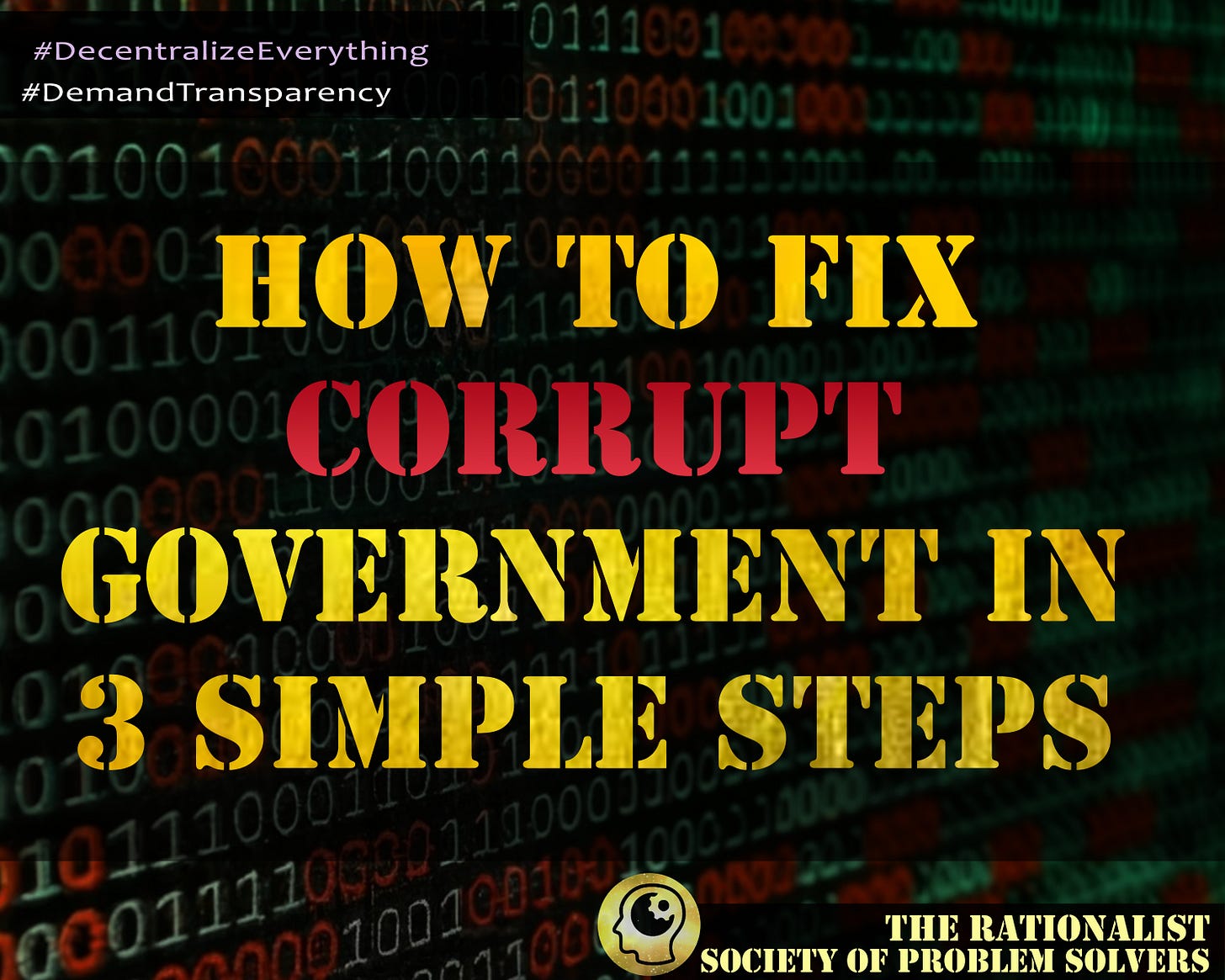
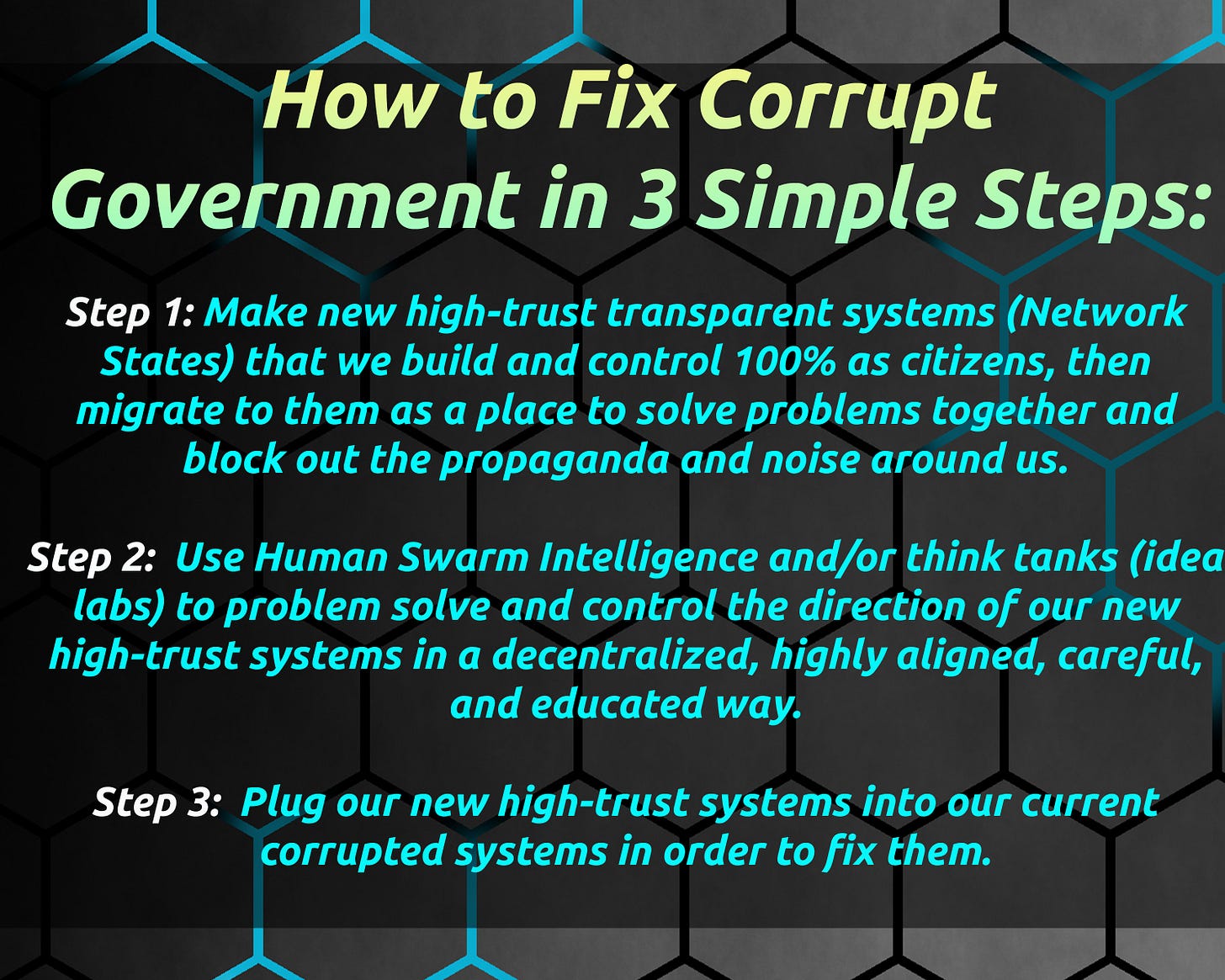
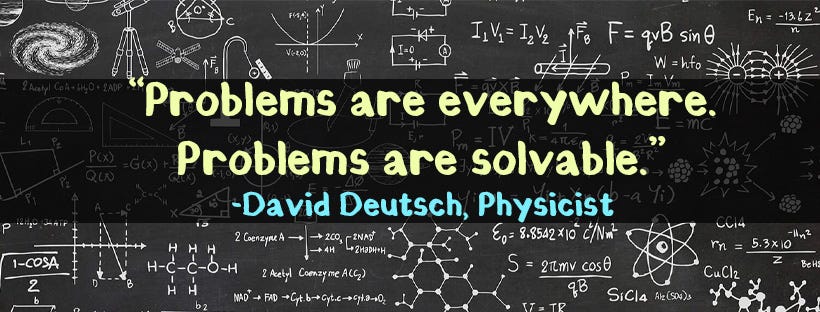


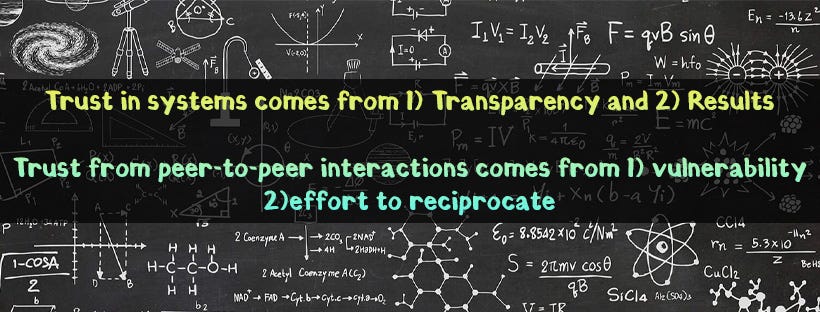


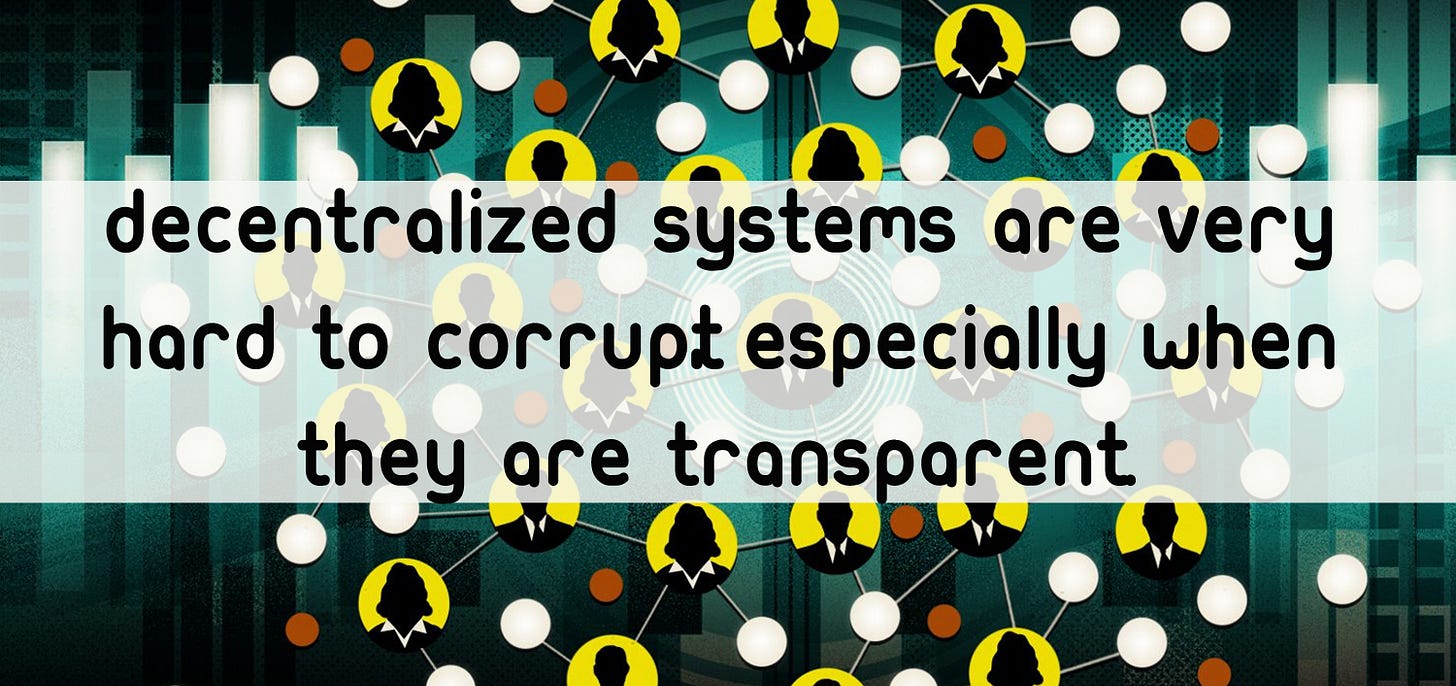

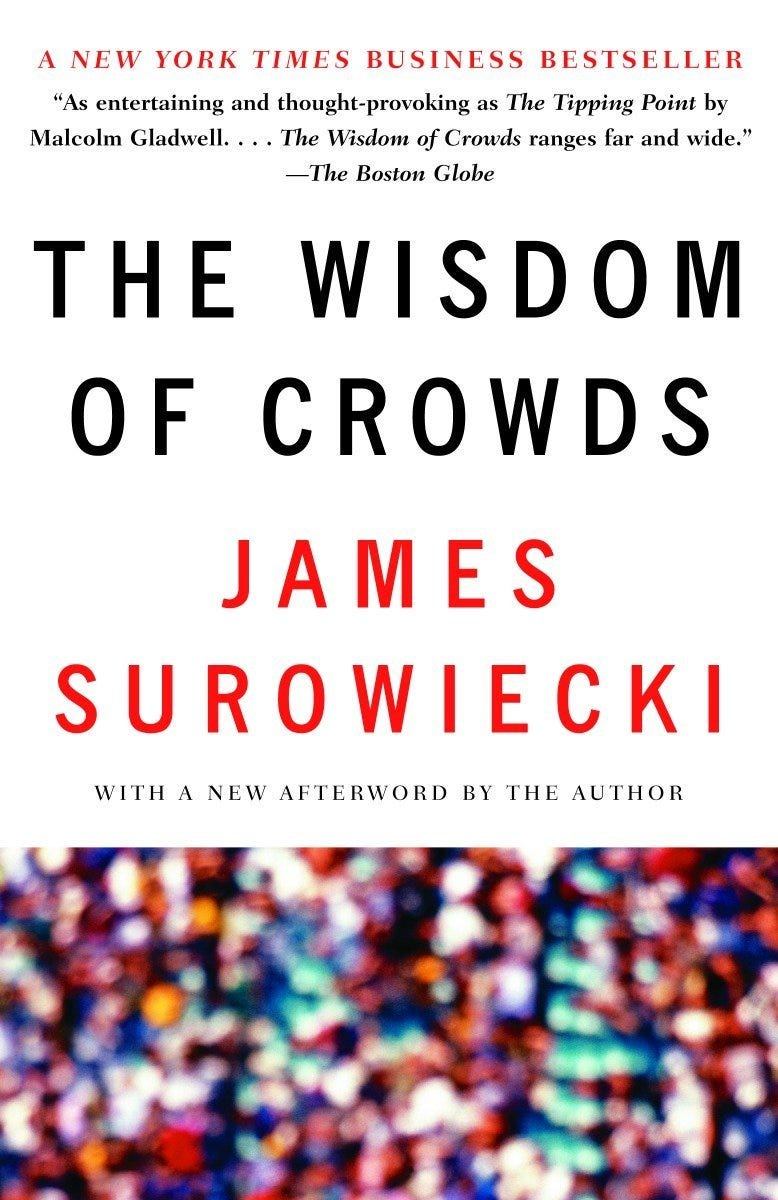


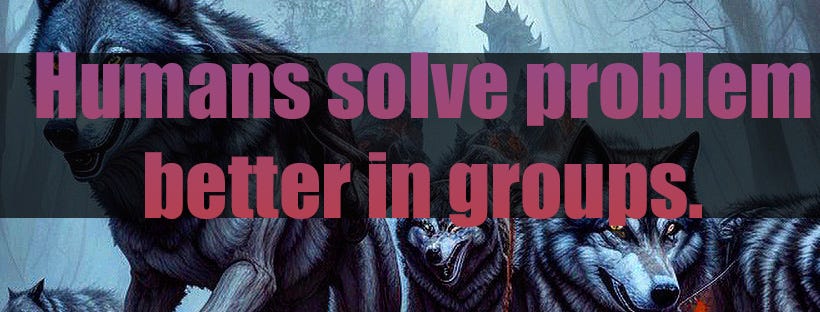

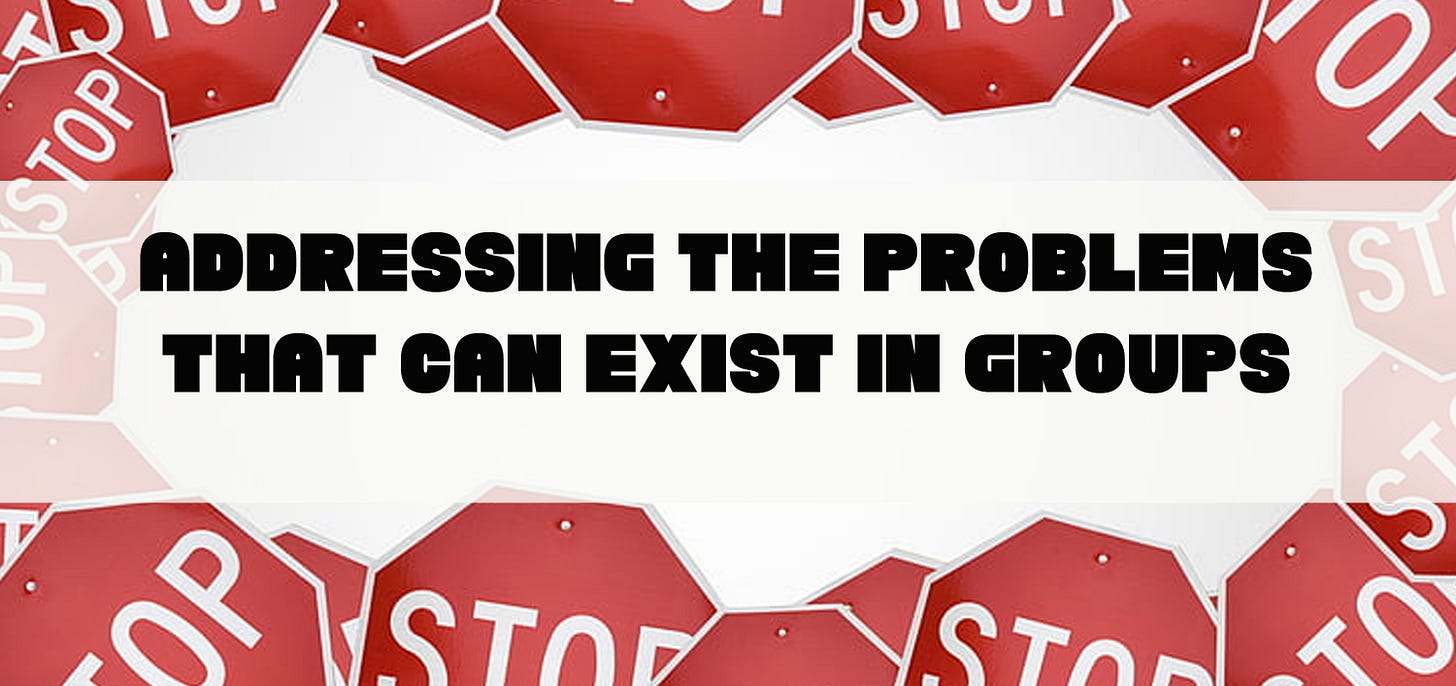
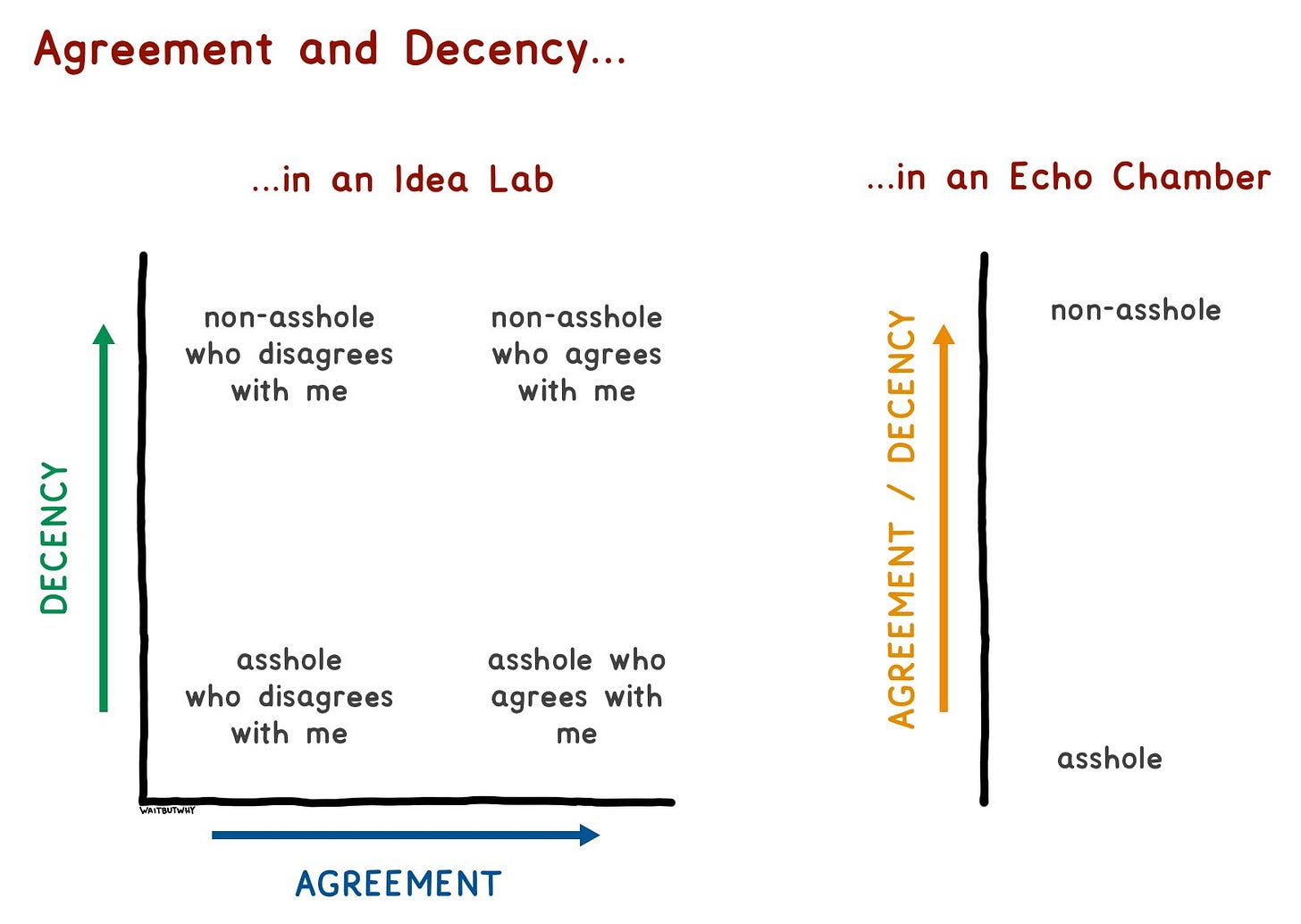
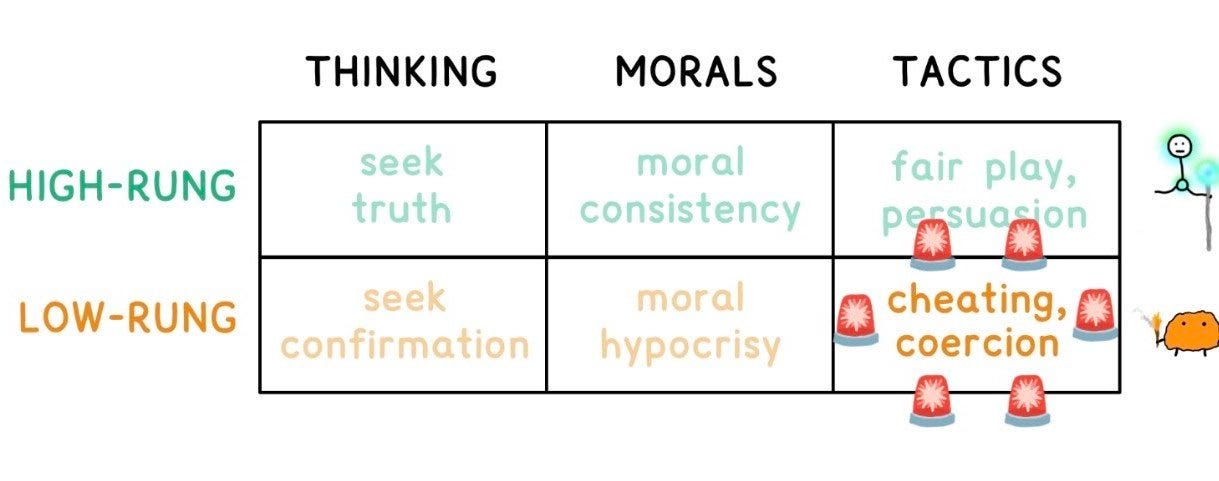


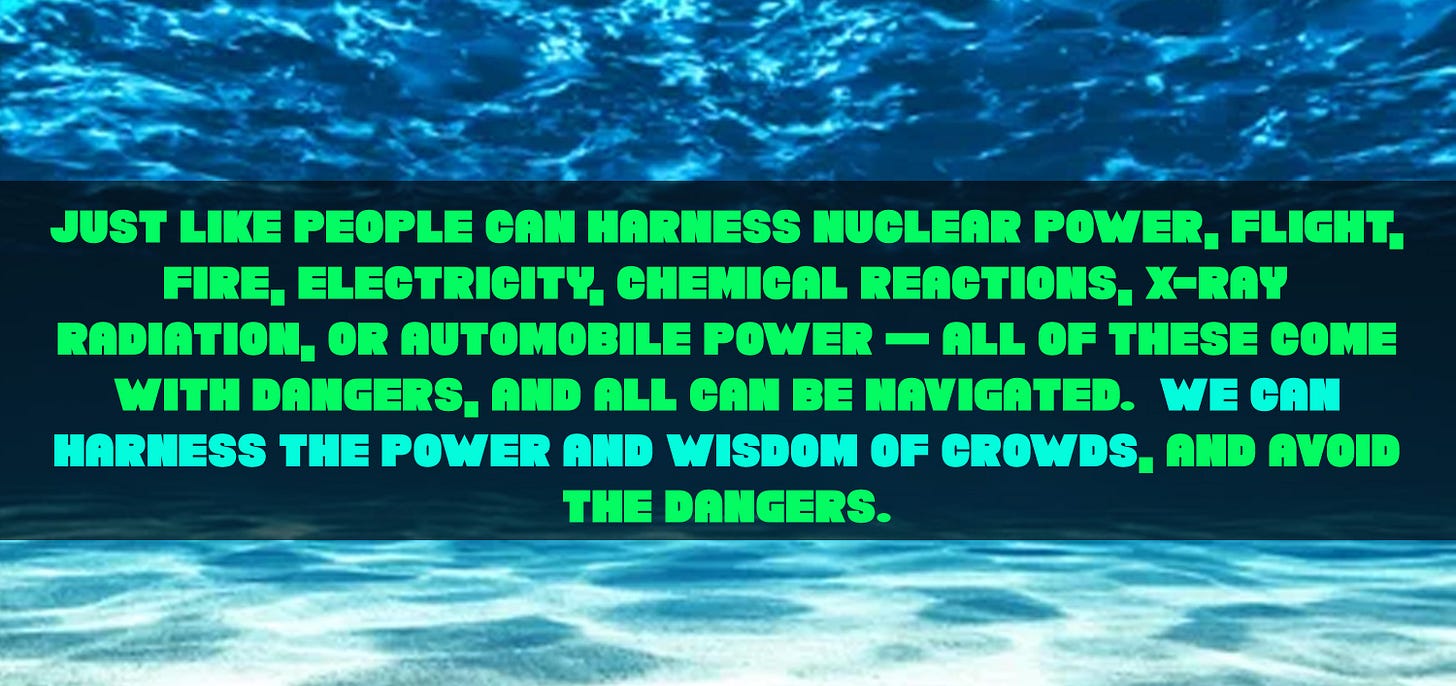
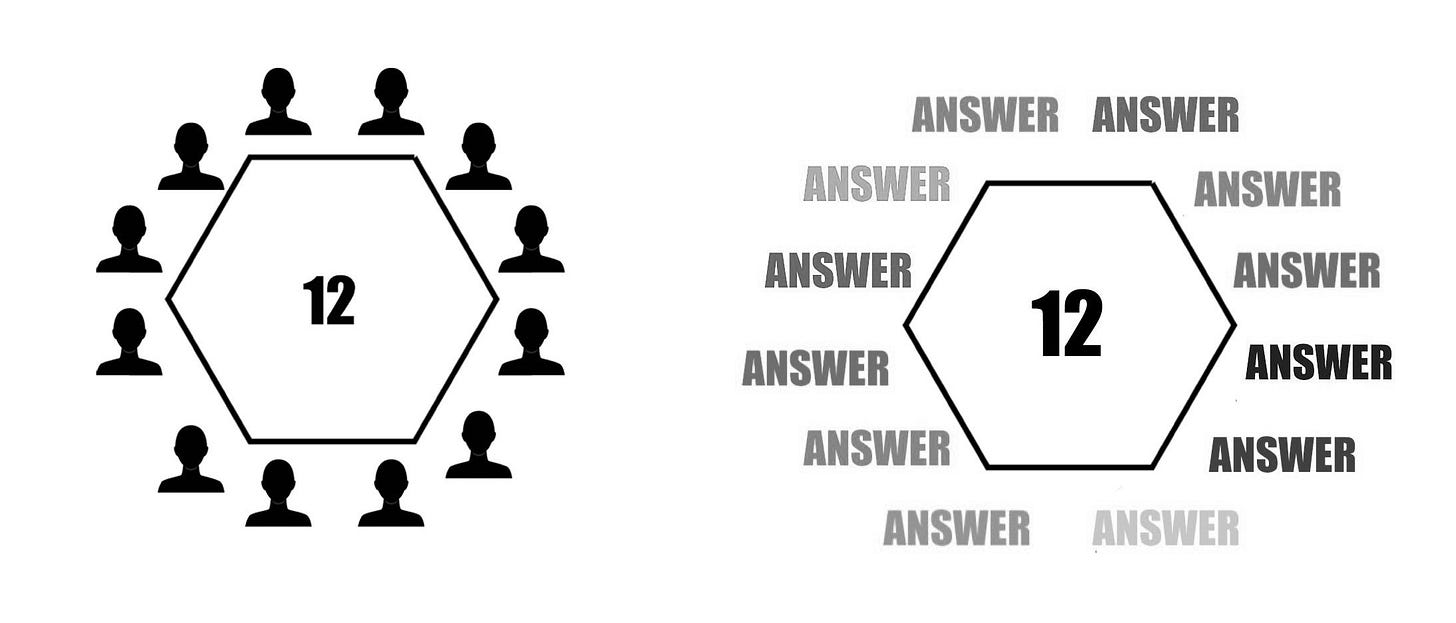
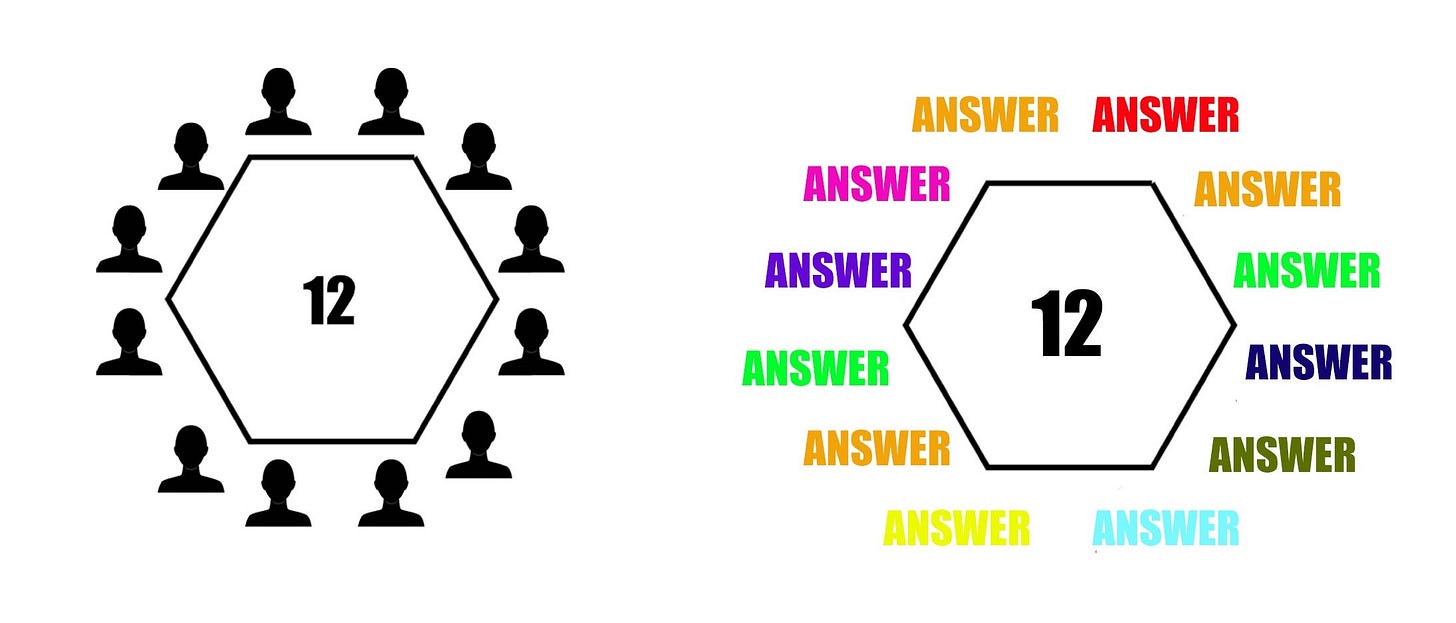

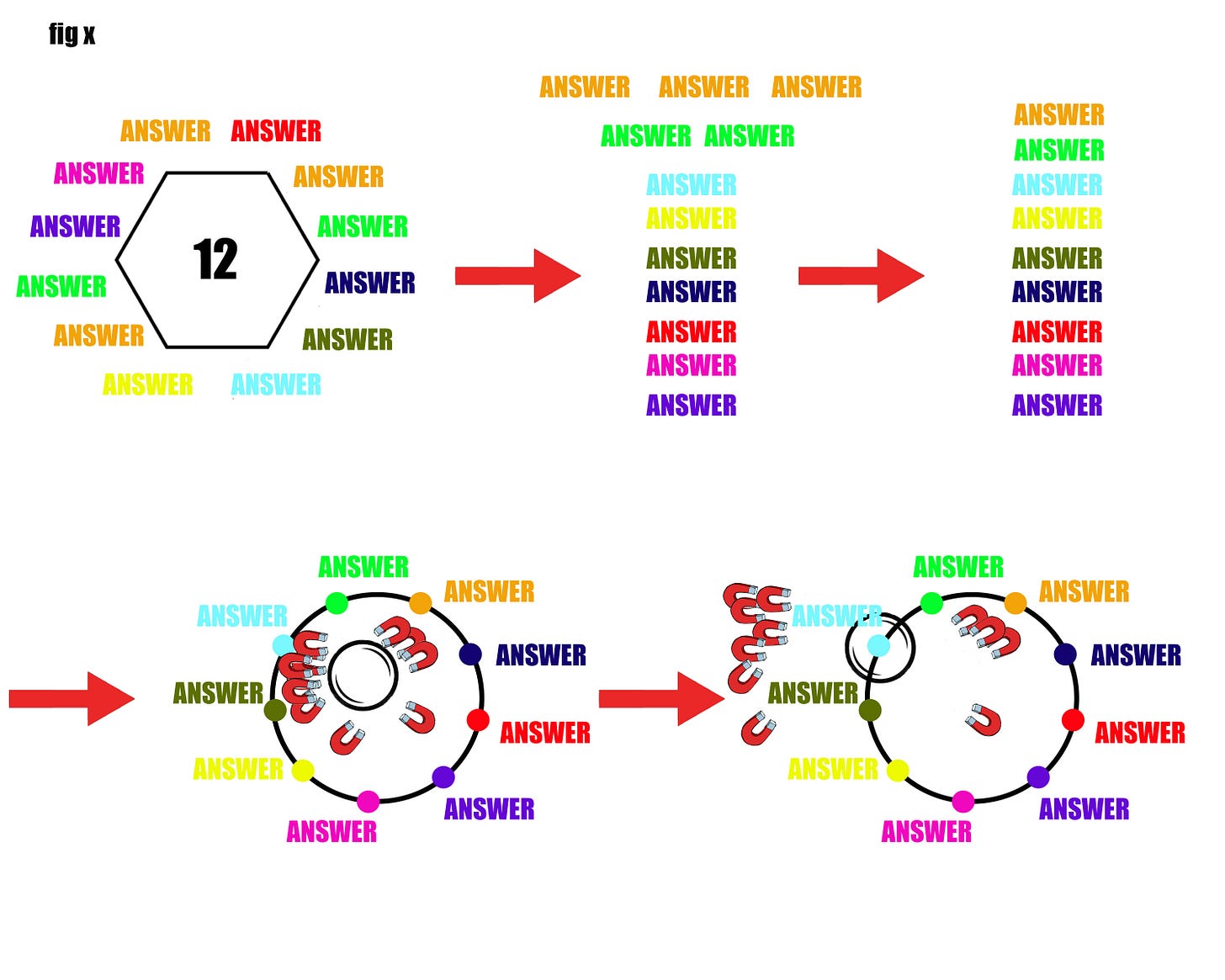
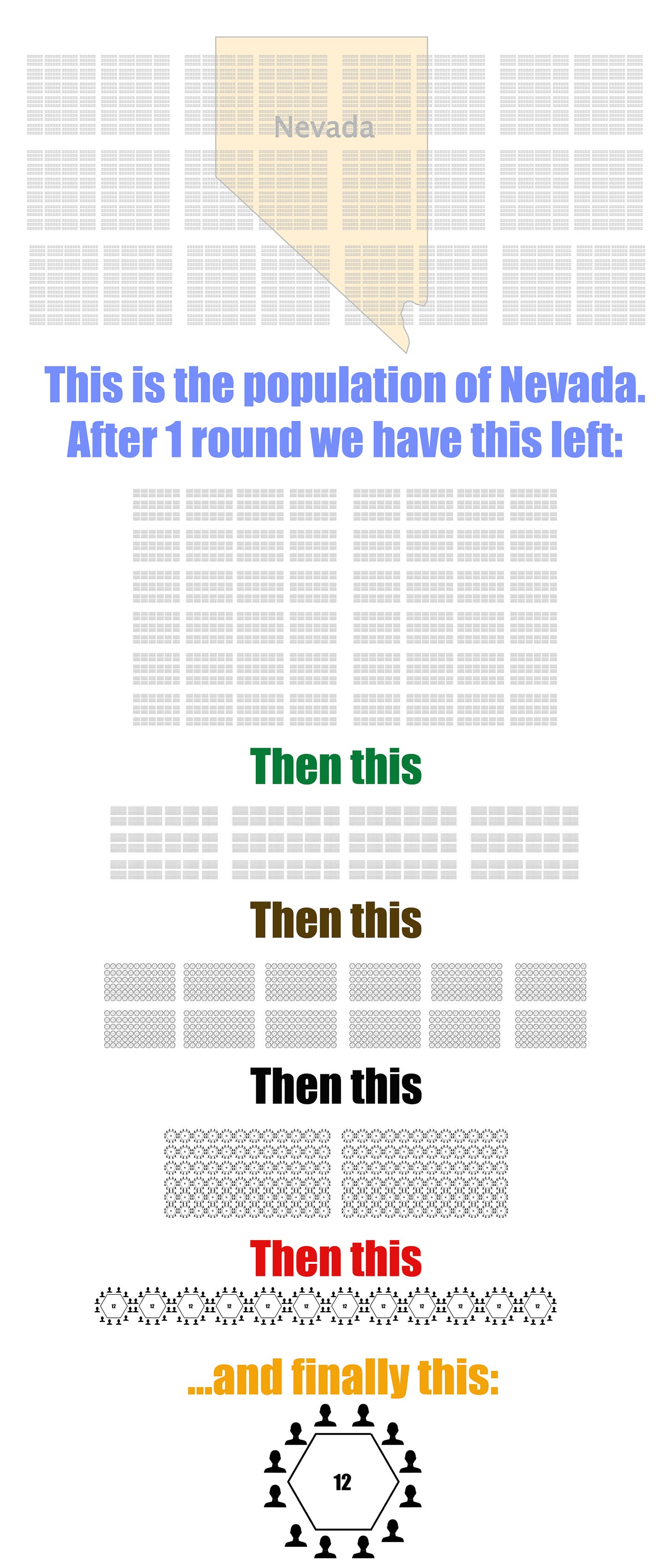

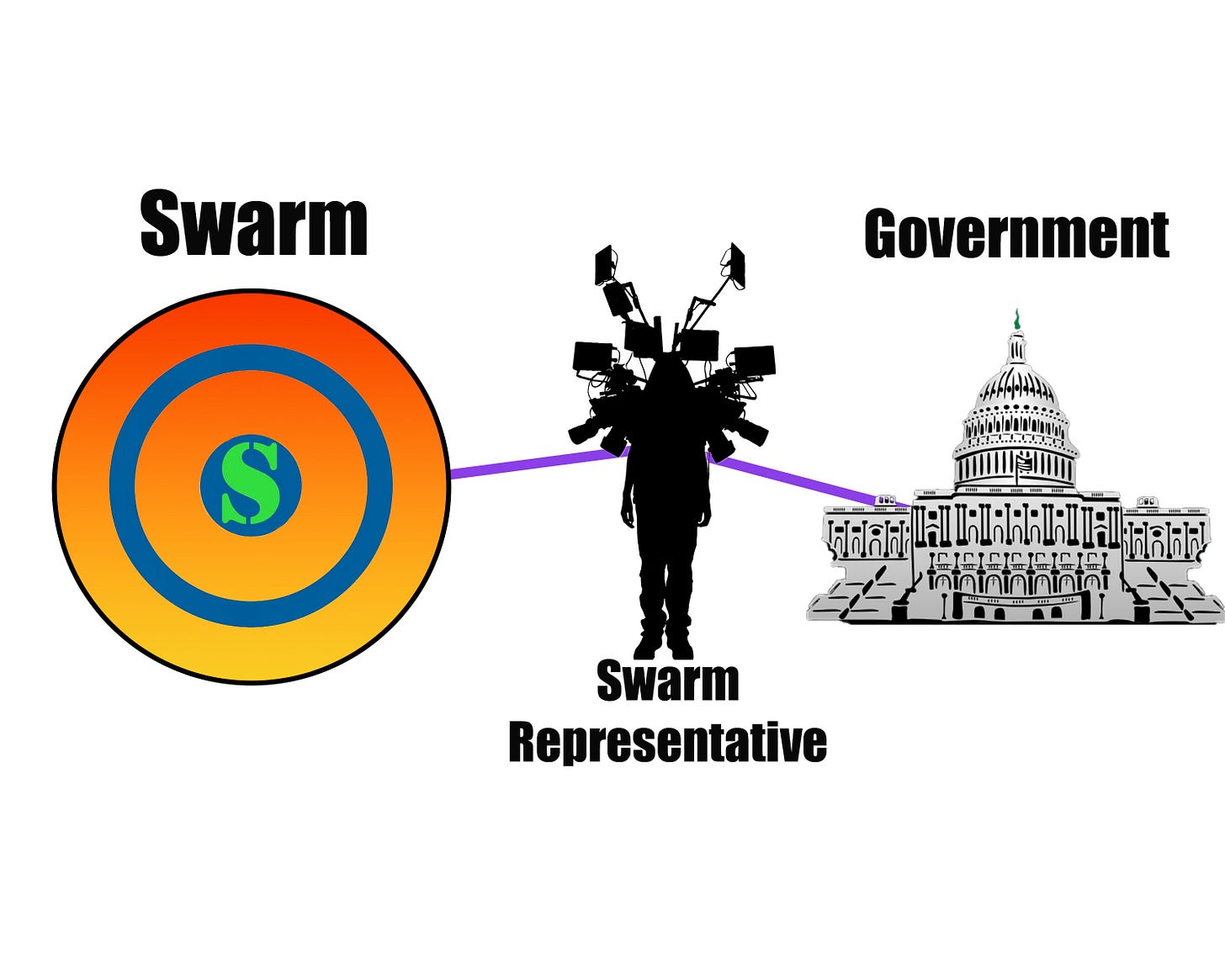
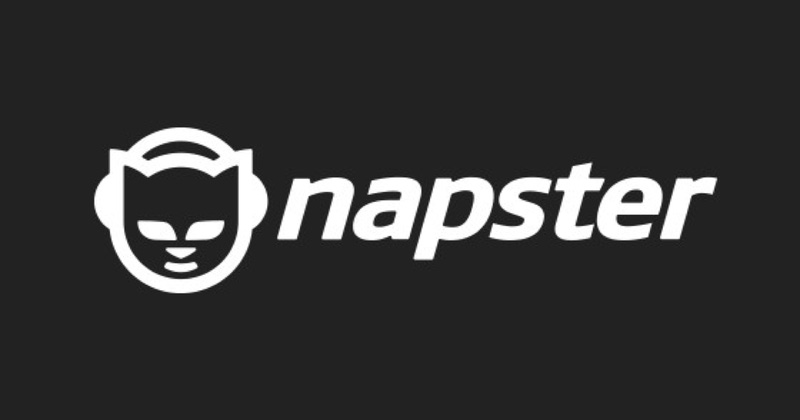

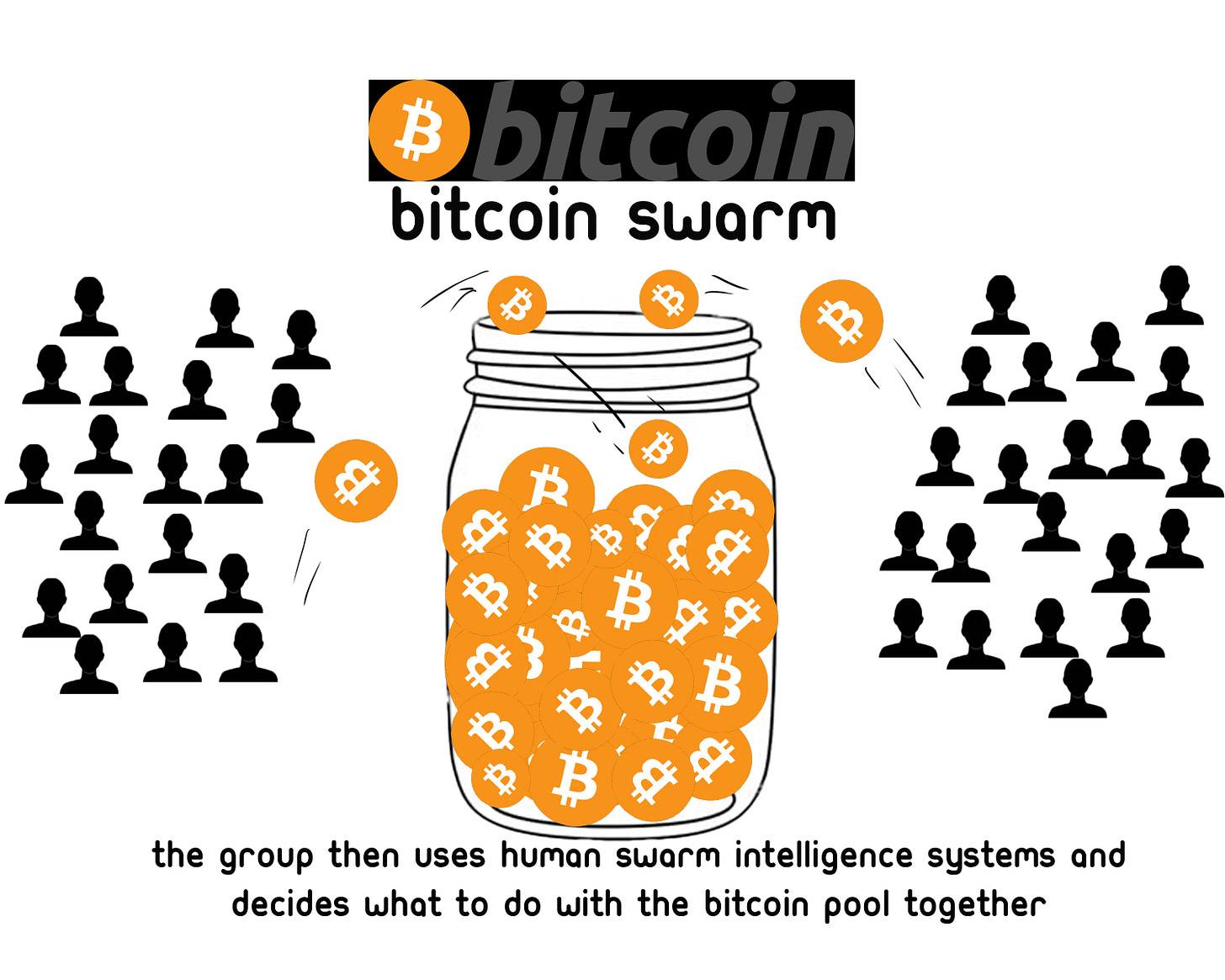
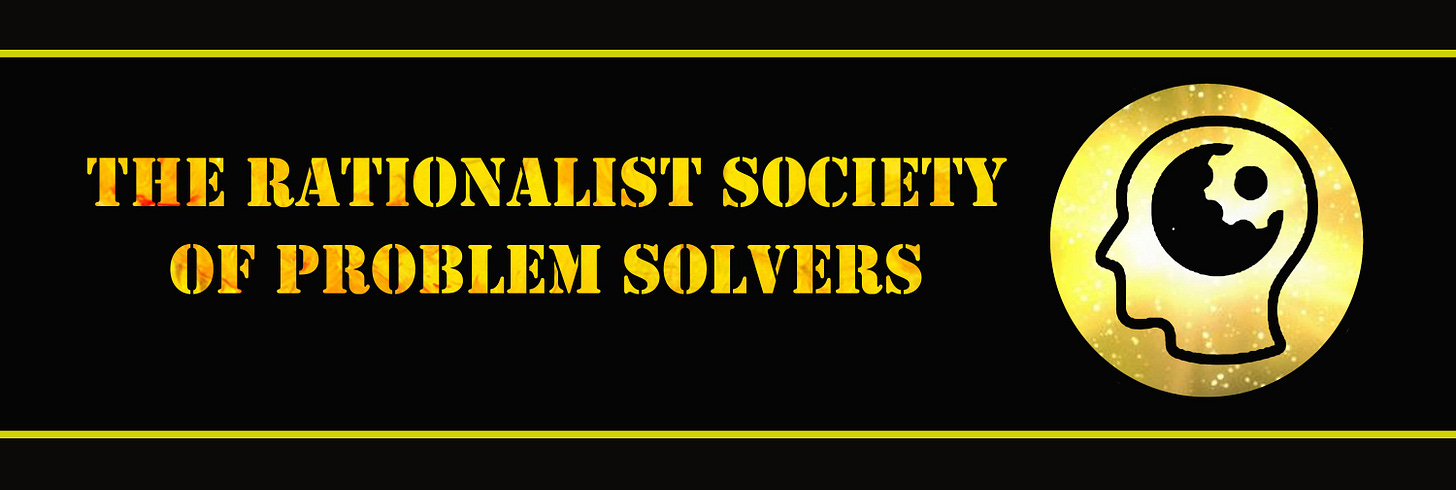
The problem is really about money and power. People used to serve in the government out of a sense of duty as much as anything else. Private industry always paid better. Now it pays so well that gov’t has been corrupted....they love the power too! The entire DMV (DC, MD and VA) area is FULL of people sucking off the teat of gov’t. How do you change that? We must also have a balanced budget and accountability for all spending. More referendums so we can actually have a say in our governance. As far as testing for psycopaths, if you take the money and power out of the equation you won’t attract those types. Gov’t contractors need to be slashed and the war machine severely cut. Politicians spend like money grows on trees. They need to spend it like it is their own household budget and not a never ending supply of $ to throw around. It really is disgusting. If a massive number of people stopped paying taxes we’d get their attention don’t you think? They can’t arrest us all.
I love all the ideas, but I want to add one. We need to screen people for psycopathy. The psycopaths must be isolated from any of these systems.